|
Are you able to see the difference between your awareness and the voice in your mind? According to Michael A. Singer in The Untethered Soul: The Journey Beyond Yourself, “There is nothing more important to true growth than realizing that you are not the voice of the mind - you are the one who hears it.” While reflecting on the many amazing truths in this book, I also stumbled upon the movie, Inside Out. Once Again, everything connects with everything else.. This animated film shows the battle of emotions and logic in someone's head. Based on a true story, a young girl has a beautiful upbringing full of happy memories that she developed into her personality. One day everything she knows about her personality, through memories of positive emotions, vanishes when the family moves across the country and her joy gets lost. The film takes a look at the control center of emotions in which joy is trying to fight off sadness, fear, anger, and disgust, but she gets lost with sadness in the maze of long term memory. Disgust, fear, and anger took over this adolescent for a while until sadness was rediscovered and was able to play her fair role. This movie was both touching and inspiring because it paints a visual image of our struggle in daily unexpected events or situations in which we have trouble deciding how to balance our emotions. "If you continue to cling to what you built, you will have to continually and perpetually defend yourself. You will have to keep everybody and everything straight in order to reconcile your conceptual model with reality. It's a constant struggle to keep it together...The only permanent solution to your problems is to go inside and let go of the part of you that seems to have so many problems with reality." Further, "To attain true inner freedom, you must be able to objectively watch your problems instead of being lost in them...Once you've made the commitment to free yourself of the scared person inside you will notice that there is a clear decision point at which your growth takes place. I have noticed this phenomenon in my own life as well. With a history in waiting tables, greeting passengers, and teaching large groups of kids, I have been expected to mask and surpress any emotions that may rise to the surface. I was not allowed to noticeably feel anything except joy. As Singer states, "Just relieve you mind of the job of making sure that everyone and everything will be the way you need them to be so that you can feel better inside. Your mind is not qualified for that job. Fire it and let go of your inner problems instead." If you don't feel and let go, negative emotions get backed up and they look for a way out. to spend your life avoiding pain means it's always right behind you. I have recently realized that I tend to unload those negative emotions onto my intimate relationships. There have been times that I cried for hours over a silly misunderstanding just because I was feeling for all of the previous moments that I did not allow myself to feel or notice. One of the essential requirements for true spiritual growth and deep personal transformation is coming to peace with pain. "If you feel insecurity, it's just a feeling. You can handle a feeling. If you feel embarrassed, it's just a feeling. It's just a part of creation. If you feel jealousy and your heart burns, just look at it objectively, like you would a mild bruise. It's a thing in the universe that is passing through your system. Laugh at it, have fun with it, but don't be afraid of it. It cannot touch you unless you touch it." A wise person affirms, "If with one breath all of this can change, then I want to live at the highest level while I'm alive. I'm going to stop bothering the people I love. I'm going to live life from the deepest part of my being. So, you may ask, how does this relate to yoga or art? Art can often times be an outlet to express love or other emotions that need to be released. In yoga, we ask ourselves, who am I? Am I my body? Am I my mind? I am awareness. Awareness of my breath. Awareness of my sensations within my body. I strive for light and love to shine through while I let go and feel anger sadness or disgust only for the brief moments that they need to be noticed. I don't need to stay tethered to them or make them a part of my being. "When you feel the pull like somebody pulling on your heart, you just let go. You fall behind it. You simply relax and release. An no matter how many times you're pulled that's how many times you relax and release. Because the tendency to get drawn in is constant, the willingness to let go and fall behind has to be constant." So, there are two ways you can live: you can devote your life to staying in you comfort zone, or you can work on your freedom. In other words, you can devote your whole life to the process of making sure everything fits within your limited model, or you can devote your life to freeing yourself from the limits of your model. All of the quotes are from The Untethered Soul: The Journey Beyond Yourself by Michael A. Singer
Have you ever gone on a journey around your bedroom or home- noticing and appreciating the beauty all around you in each detail of crowning, stitchery, paint stroke, clothing item, or leaf of a house plant? You can travel down your block, in your neighborhood, or through your town, and experience beauty and wonder. The trick is to have a curious and receptive state of mind. I've been reflecting more on Alain du Button's book, The Art of Travel. He makes some very interesting statements about ourselves, our space, and our thoughts. During the last section of the book, he comments on a book that he read called, A Journey Around My Bedroom by Xavier de Maistre, written in 1790. Xavier was sentenced to house arrest for 6 weeks, so instead of feeling doomed and trapped, he decided to go on a journey of his imagination, through his own bedroom. By treating his bed, his armchair, the artworks on the wall and his small library as major tourist sites, he planned to reflect upon their history, their importance to him, and the philosophical questions that they brought to mind. This philosophy fits perfectly with one of my favorite quotes and mantras from Leonardo da Vinci, "Learn how to see. Realize that everything connects to everything else." "A bed," writes de Maistre, "witnesses our birth and death; it is the unvarying theater in which the human race acts out, successively, its captivating dramas, laughable farces, and dreadful tragedies. It is a cradle bedecked with flowers; -- it is the throne of love; -- it is a sepulcher." He states that the room is "that enchanted realm containing all the wealth and riches of the world", revealed and reveled in when he has the time and peace to dwell on it. Do you try to get away from yourself by traveling to somewhere far away, only to be confronted with yourself, your insecurities, annoyances, impatient tendencies? Do you find that you don't want to be tethered to your stagnant furniture? Alain states, “It is not necessarily at home that we best encounter our true selves. The furniture insists that we cannot change because it does not; the domestic setting keeps us tethered to the person we are in ordinary life, who may not be who we essentially are.” This is why many people set out to travel, to escape- to try to rediscover themselves. In yoga philosophy we ask ourselves the essential question, Who am I? Do you know how to be happy and quiet in your own room? Or are you unhappy with your space. What can you change, clear out, or move to create a beautiful and peaceful oasis for yourself? According to Alain, “Our capacity to draw happiness from aesthetic objects or material goods in fact seems critically dependent on our first satisfying a more important range of emotional or psychological needs, among them the need for understanding, for love, expression and respect.” How can we begin to satisfy those needs? This leads to even more self discovery and studying the 8 Limbs of Yoga can help understand this process more. Begin by taking a deeper look at yourself in your own space. Let's start by discussing the Limb of Niyama, with a focus on personal habits and self-discipline. Do you clean up after yourself regularly? Do you ever deep clean? Is it often enough? Have you thought about re-arranging your furniture? These questions literally hit home with me. As I was preparing in July to travel to Eastern Europe in August, I decided to rent out my apartment through AirBnb. I've recently stayed in AirBnb accommodations in Mexico and I like the Avaunt Guard theory that goes along with finding new, efficient ways to travel. I found the perfect guest who volunteered to also look after my cat. Then, I began to prepare for departure. I read on the website that I could get a bad review if my apartment was anything less than impeccably clean! I consider myself a relatively tidy person, but my place was far from impeccable. I decided to deep clean one area of my apartment at a time. I'm embarrassed to admit that I found corners and pockets that I have never cleaned (in 5 years at this place). I've just never looked that closely. On my hands and knees, scrubbing the yellow tiles and tub, crowning, and bookshelves, I had to individually move each book, earring, and candle and remove all dust, grime, or settled cat hair. Throughout the process, I began to fall in love with my apartment again as I noticed the growth in my plants I remembered how much I've grown since I've moved here. The candle wax drippings remind me of hosting book-clubs and intimate discussions. Dusting each book reminded me of the adventures that I've already experienced. Through Dharana,another Limb of Yoga- we can slowly concentrate on specific objects, leading to Dhyana, total absorption through meditation. Through observing, focusing, finding peace, thought and object become one. I also read in the agreement that I needed to leave a fair amount of space open in the closet for my guest to hang her clothes. Then I realized that I've been a pack rat. I still have some dresses from high school. I love themed parties and excuses to dress up in costume, but do I really need 6 outfits to go along with the 007 theme? I realized that I must let go of some of these precious finds that I spent my hard earned money on. Many of them are just an antique now. Hanging in the closet as a memory. I can just take a digital photograph now to serve that purpose. Shoes are another story. I feel like I spent so much time gathering the right pairs of shoes to wear with the right occasion, but many of them are so uncomfortable, that I never end up wearing them more than that one time that they gave me blisters. Then, the process of packing only a few shoes, dresses, and yoga clothes for a whole month was also challenging, but its healthy to realize that I don't need to keep accumulating. Through this process I had the chance to experience the yoga Limb of Tapas, which is about minimizing and doing with luxuries. My struggle is to sustain that concept now that I'm back to a materialist society. Im working on finding contentment, Santosha, with what I have. During my travels through hostels and AirBnb apartments, I found myself missing my studio. I even displayed the image of my room as the home-screen of my iPad. Some thoughts to ponder about creating your own peaceful and loving space:
Do you have enough light? Is there growth around you? What can you change, clear out, or move to create a beautiful and peaceful oasis for yourself? Do you clean up after yourself regularly? Do you ever deep clean? Have you thought about re-arranging your furniture? Do you honor your body in this space? Is there room to practice yoga or stretch? Do you have a happy place? When you're stressed, scared, sad, or bored, do you ever close your eyes and imagine a beautiful setting that fills your heart with peace and joy? I have been practicing this technique for many years and it often works for me when I'm at the dentist or dealing with a difficult transition in life. After my recent travels, and reading the book, The Art of Travel, I have been reflecting on the beauty and love in this practice and how it relates to both yoga and art. In Alain de Button's book, he discusses why we travel and the process of the imagination. Traveling has been a thriving activity for thousands of years. Humankind has the urge to explore and see new things. Tourism is the #1 industry in the world today. Often times this urge is based in finding peace, beauty, inspiration or love. Sometimes we want to escape ourselves and our current situations in life to find a Happy Place. Alain de Button states, "The longing provoked by the brochure was an example, at once touching and pathetic, of how projects (and even whole lives) might be influenced by the simplest and most unexamined images of happiness; of how a lengthy and ruinously expensive journey might be set in motion by nothing more than the sigh of a photograph of a palm tree gently inclining in a tropical breeze.” Sometimes it can be just as refreshing to just close your eyes and imagine the breeze on your skin, tasting the salt of the ocean, hearing seagulls and waves crashing, and watching the water meet the horizon line of the sky with a contrasting balance. When we focus on this balance in nature, we can re-align the love and beauty within ourselves. When you are mindful and aware of your surroundings, you can capture this beauty and keep it within you where ever you are. But first, you must experience this place. It doesn't have to be traveling to a far away destination, but some of us are drawn to the exotic. You can find this experience in your local park, backyard, or even in the comfort of you own bedroom (I will explain this theory more in the following blog posts). The whole experience of traveling to this place rarely ever meets our expectations of continuous bliss. There are struggles in getting from point A to B through uncomfortable airports, planes, trains, buses, car rides, climbing stairs, expensive taxi rides, and trekking on foot. However, “The pleasure we derive from journeys is perhaps dependent more on the mindset with which we travel than on the destination we travel to.” This in-between journey is an opportunity to reflect, learn, and grow. My most recent experience with this philosophy was in Croatia. One of my favorite parts about traveling is to start studying about a place and to imagine what it is like (building expectations). I look through guidebooks and online resources to decide where to go, how to get there, and how to find the beauty. I learned of a place called Plitvice (PLEET-VEET-Suh) Lakes. This oasis of waterfalls is potentially the most naturally beautiful place in all of Europe. It consists of over 16 lakes and hundreds of waterfalls made possible by the travertine landscape, terracing of limestone through the flow of mountain run-off water. These particularly sensitive barriers are the result of an interaction between water, air, and plants and create over 50 shades of turquoise ranging from sea-foam green, to royal blue. However, we found it quite a bit tricky to get there. After a long flight to Moscow from Los Angeles, I flew into Budapest, Hungary and stayed there for a few days with my boyfriend, Kevin. Next, we had to take a very early and old train from Budapest to Zagreb, then wait several hours for a bus to Plitvice Lakes. Accommodations were also a struggle to book as I began to learn how popular this destination actually is. The pictures look blissful: hundreds of waterfalls and multiple lakes surrounded by forest and wildlife. What the pictures are not telling you is that it is packed full of tourists!!! This destination is a far cry from undiscovered! Even though only 25 years ago, this was a war zone in Croatia. When we arrived at the National Park the next morning, we were greeted with a line of about 100 people, just to buy a ticket into this park. Then we had to follow the crowds along the pathway/platform to wait in line for each "ride" (photo opportunity for each waterfall). Needless to say, we felt like we were at an amusement park. I remember feeling disappointed that place is lacking the peaceful feeling of solitude that the photos promised. However, we did find some nature trails, off-the-beaten path, away from the large waterfalls. This was an unexpected chance to observe the beauty and details in small trickles of streams, individual trees, vines, ducks, butterflies, dragonflies, trout, and even kittens. Although I did not have the chance to stay and meditate in front of the most grandiose and impressive waterfalls, I did get to briefly feel them, then snap a photo and quick video. These moments now have the power to stay with me. I study the photo's details in the rocks, moss, and color every time I'd like. Now, when I close my eyes, I can hear the water rushing and moving, I can feel the mist on my skin, I can smell the clean air, and I can see the power and movement of earth. So, I ask myself, was it worth the struggle and disappointment of not exactly meeting my expectations...ABSOLUTELY YES! The beauty in this experience is now a part of me and the struggle to get there makes it even more valuable! I'd love to hear from YOU!
What's your happy place? Please share in the Comments section below! Finding the Half Moon Contrast Through Yoga and ArtTo end my journey through Eastern Europe, I planned a three day stop in Berlin; I had very few expectations. I learned about the Berlin Wall in World History classes and I heard from fellow travelers that Berlin is "really cool" and "up and coming." Other than that I decided to neglect the use of guidebooks and leave this portion of my trip for surprise. Just like Leonardo Da Vinci claims, "Everything connects to everything else," I found endless yoga and art connections! Traveling is all about finding a balance between relaxation and energetic inspiration. Yoga is booming in present day Berlin. There is a movement towards Ashtanga Yoga and it is trendy to eat at new Vegan cafes. This relates to the first limb of yoga, Ahimsa, non-harming. Although it is a controversial topic, some people consider the act of eating meat to be associated with harming a creature, that is why a vegan diet is often paired with yoga asana practices. I found that the tour guides in Berlin are the best that I've seen thus far: vibrant, well educated actors and story tellers that lead you on an unforgettable journey through controversy and change in one of today's and yesterday's most interesting cities. The city's center in the past and has been redefined as the new city center again today, after the fall of the Berlin Wall. This Brandenburg Gate is the symbol of reunification in Berlin. Nineteenth century Lesser Ury captures this symbol in paintings of these brightly lit, but rainy streets of Berlin's center. Further, Benno Berneis also recollects the Brandenburg gates through his gold leaf victory wings. After WWII, Berlin became a social and political experiment for world politics and country leaders. Germany, and Berlin itself (the capital of Germany) were divided into two sections. Half was for the USSR, who suffered the most from Hitler's insanity, and the rest for England, France, and the U.S. who also fought back in the war. From 1945 to 1961, young, strong, educated, and aspiring individuals were escaping East Berlin for more opportunity in West Berlin. The leaders of the German Democratic Republic (a nice way to say Communist East Berlin) noticed that they were losing a valuable part of their society, so at 4am on August 13th, 1961, the border became lined with barbed wire and armed guards to attempt to put an end to this possibility of escaping. Suddenly, relationships with family, friends, and lovers were severed in half. Months later the stone walls replaced the barbed wire and guards were ordered to control this "dead man's zone" by stopping anyone who tried to escape. Although the order was made to stop East Berliners from escaping, awards and promotions were giving to the snipers who actually killed escapees. The goal of these actions was to control the people by instilling and developing fear, the opposite of confidence and contentment. West Berlin became a walled island, similar to the shape of a Half Moon, situated inside of East Germany. Now, next to this square, The Memorial to the Murdered Jews rises and falls with each of the 2,711 grey concrete slabs shaped like coffins in various heights, possibly symbolizing the various ages of the victims. With an intentionally uneven foundation, this contemporary and interactive labyrinth of an art structure was not left with a specific description or even written explanation, but I found that people tend to disappear around the corners of this grid. The walkways are designed for single file walking and it is easy to lose a partner or family member around any corner. This dark surprise is an awakening experience and connection to the experience of the Jews being separated from their families and taken to concentration camps to disappear forever. In direct contrast, the Tier Garden across the street is full of life- green grass glistening, forested trees growing, children playing, pedestrians strolling, bikers gliding through, and nudes soaking up the sun! Yes, naked people have found freedom in this oasis! Its called the Free Body Culture that developed and became a popular outlet of expression during the oppression of the GDR and separation of the wall. The elegant tree branches and romantic pinks and oranges come to life in Berlin's Walter Leistikow's Art Nouveau paintings of treed spaces such as in this park. On reflecting about these two opposite places residing next to each other, I see that the circle of life will continue. Hatha Yoga philosophy is about spirit and matter becoming one. Similarly, Tantra is about letting go and not clinging to attachments. Inhale, pause, then exhale, pause. Enjoy the moments, then let go. According to Swami Rama, "You are the architect of your spiritual life." Speaking of architects, Potsdam Platz has boomed within the last 25 years with cutting edge architecture. Styles designed by the architects from the Pompidou in Paris show contemporary change and contrast to Classical, Baroque, and Renaissance styles. Sony's architects developed a glass and steel structure that resembles a volcano, on top of their new building, as a reminder of their beloved Mt. Fuji. The Reichtag's roof, Berlin's original parliament building (that was mysteriously destroyed during Hitler's rise to power), was replaced with a half sphere, glass dome, that symbolizes the transparent government now. Citizens and sightseers can climb stairs to the top and see what is happening on the inside. This is a stark change to the controlling groups like the Nazis, Communists, and Empires that have reigned tyrannically in Germany's past. Construction is everywhere in this city. Change is around every corner! Construction can be a frustrating with early loud noises, detours, and interruption of aesthetic scenery and photographs. It is also an excellent opportunity to practice Pranyama, breathing exercises to relax and calm the mind. This construction is possible because of both privatization and the equalization tax. Every working German pays a temporary 5% tax of their income to the reconstruction of East Germany and East Berlin. This is a highly controversial topic because 75% of West Berliners say that they were happier before The Wall came down, and 35% of East Berliners say that they were happier too. How can this be? 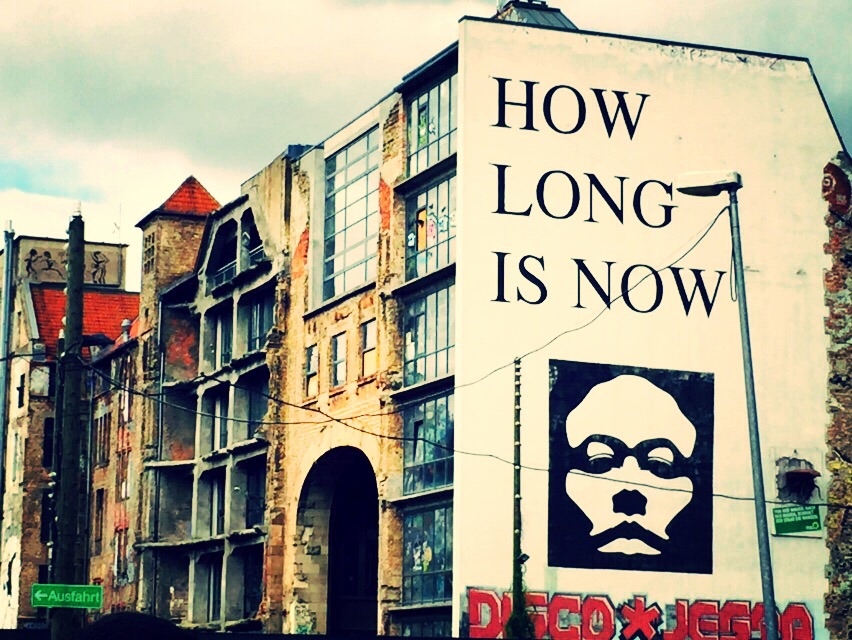 Today, East Berlin is attracting more young and international artists than ever before. Artist tend to attract new cafes and restaurants. Therefore, gentrification has been occurring within these boheme communities and it attracts the flair of certain quarters. For Berliners, property has always been something in a temporary mindset. Because of different governments taking control, property has been constantly taken and redistributed over the past 100 years. Politics in Berlin today are still an area for controversy. The Neo-Nazi party is almost at 5%. They post advertisements about Giving Gas on a motocycle, but in reality this is a very disturbing metaphor for their desire giving deadly gas to victims in a gas chamber. In the former East Berlin neighborhood of Freidrichstein, one third of the population is on social welfare. Whereas unemployment totals in Berlin are at 11%. Some Berliners believe that life was simpler in East Berlin when the wall was up and they were controlled by the GDR. This nostalgic philosophy is compared to fogged up glasses. People are not remembering the big picture of oppression. They are simply noting that there was little competition. No drive to keep up with the Joneses. Further, they would have to wait in line for very simple delicacies like a banana or pineapple, which only came around every few months. On the flip side, apparently some things were better in East Berlin before the Wall came down. Women were treated as equals in the work world. There was no glass ceiling like there can be in capitalism today. With this kind of freedom, a strange statistic shows that the divorce rate was much higher in East Berlin during the GDR because women did not have to stay in dependent relationships. They now how the power and choice to leave when the relationship is no longer meeting their needs. In contrast to The Holocaust when the Third Reich was eliminating Jews in all of Europe, today young Israeli immigrants are on the rise as they have the opportunity to receive citizenship in the EU through Germany. Other prominant international communities in Berlin include people from Poland, Itlay, Serbia, Russia, Bulgaria, France, United States, Vietnam, and Spain. In 2008, it was noted that 25-30 percent of the population was of foreign origin. During World War II, Berlin lost 2,000,000 people and even with all of this immigration, it is still not back up to 4,500,000 people. During the summertime, one third of Berlin's population is tourists. Berlin is now the third most visited city in Europe, just behind London and Paris. The Turkish community is also growing as there are now 200,000 living in Berlin. It is the largest Turkish community outside of Turkey. Turkish influence can be seen with the fast food industry and the art world. Some Turkish/German art sculptures have been popping up around Berlin. These sculptures represent isolation. Perhaps they don't feel as welcome as they would like. On the flip side, Germans use this Turkish influence as Turkish beaches are a popular vacation destination for Berliners. Berlin today is a UNESCO "City of Design" and recognized for its creative industries and start-up environment. Berlin's economy is dominated by the service sector, with around 80% of all companies doing business in services. Some of these services include advertising and design, construction, media and music, hotel business, transportation, communication technologies, medical engineering, biotechnology, e-commerce, retail, and environmental services. The creative industry contributes to about 20 percent of Berlin's gross domestic product and consists of new music, film, advertising, architecture, design, fashion, performing arts, publishing, software, radio, video games, TV, and street art. Although street art is not technically legal in Berlin, there are a lot of grey areas of expression like drinking alcohol on the streets, biking without helmets, and walking your dog without a leash. Well known and appreciated street artists were assigned areas to give a signature on the Berlin Wall; this is considered an example of a social contract for freedom of expression. However, 5% of the police force is assigned to controlling graffiti in Berlin and they look for similarities in signatures and styles; there is a 3,000 fine for each spray painting or tag, but poster art is only 30-40 Euros per poster. Some well-known and developed artists recieve permission and permits before creating a largescale painting on wall. Similar to yoga asana practice, Berlin is working on aligning its parts (neighborhoods and different political viewpoints) into one cohesive whole, just like the parts of your body working together to hold a pose. Through yoga philosophy we can ask ourselves: Who am I? Where am I from? What makes me, me? How can I be happy? How can I meet my needs on the deepest level to enlightenment? As my journey comes to an end, I remind myself to enjoy the moments and then let go. I do not know what tomorrow will hold. There could be many more adventures, inspirations, and surprises waiting for me back home. I'd love to hear from you about any or all of these questions and more:
Did you see contrast and connection in Berlin? Where do you find the yoga and art relationships in your life? Where do you see spirit and matter come together as one? How do you enjoy the moment and then let it go? Please post as a comment below! |
Hannah Faulkner
|
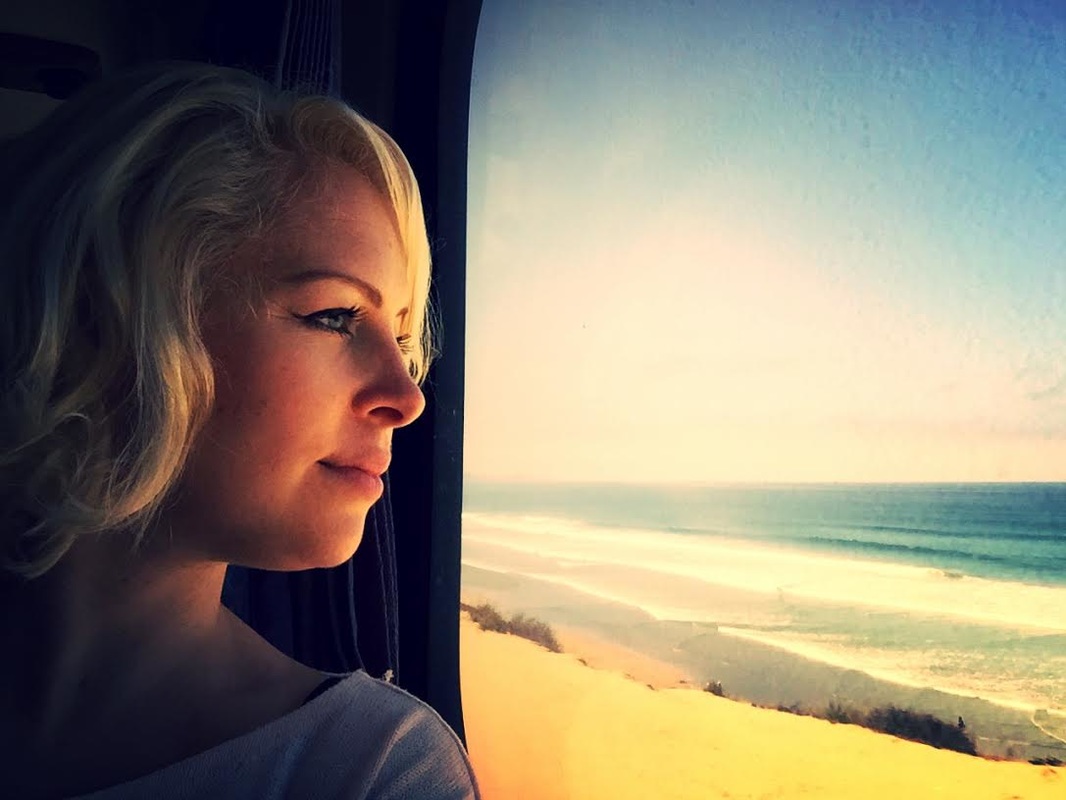
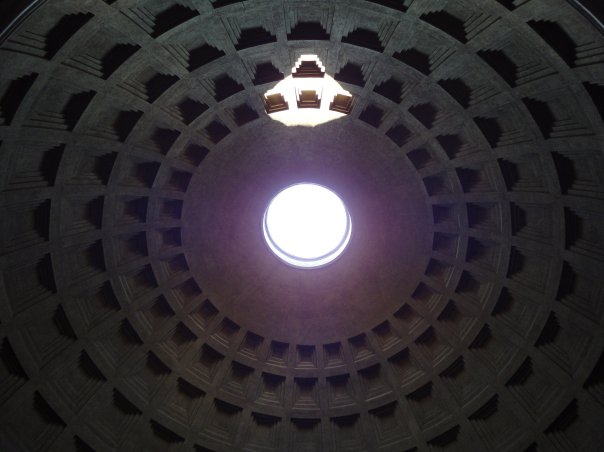
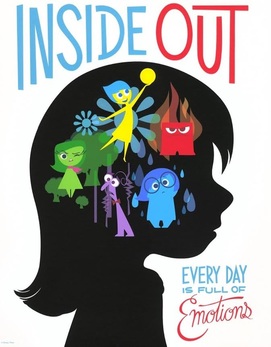
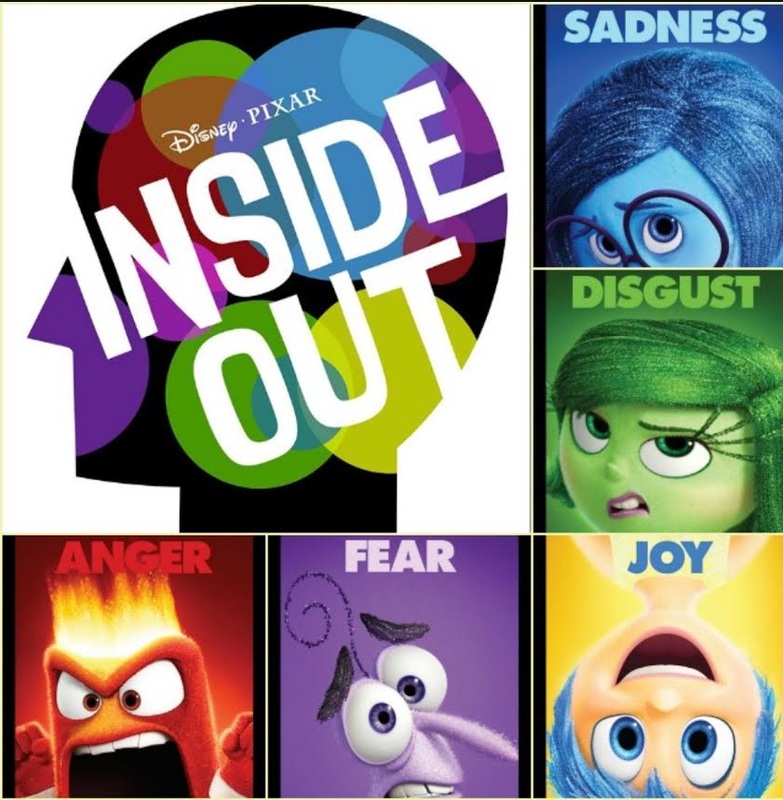
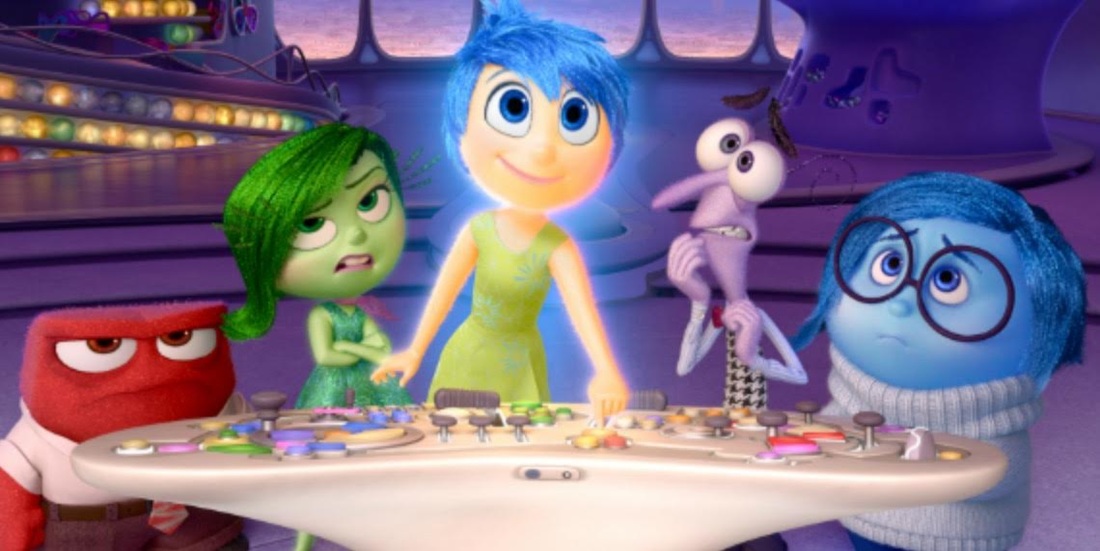
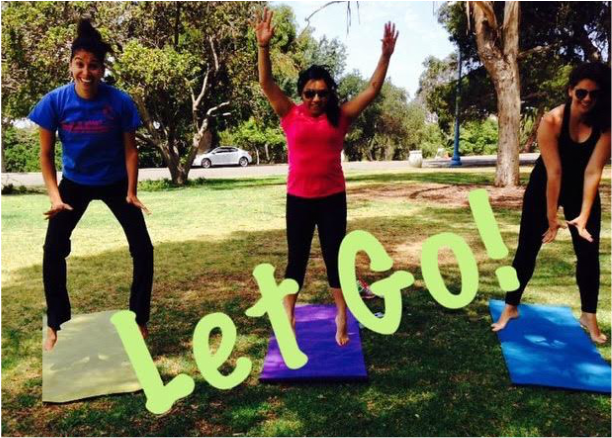
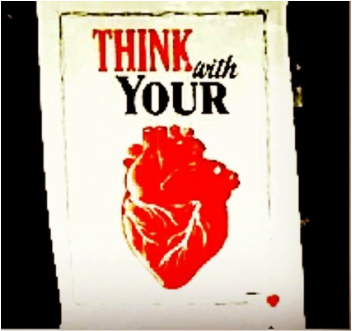
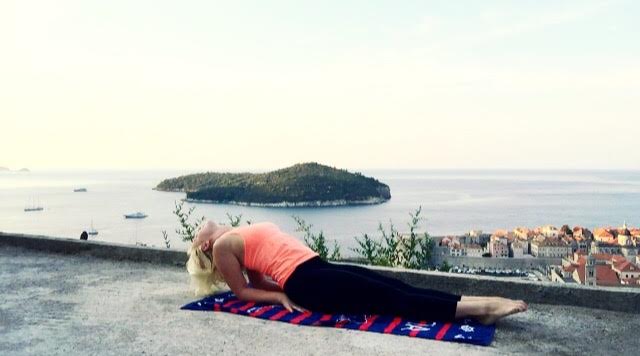
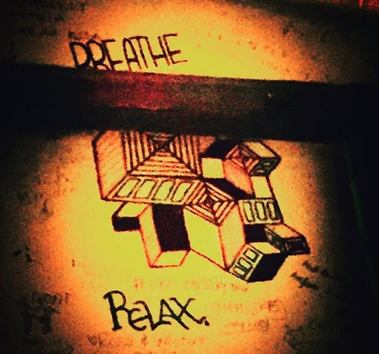
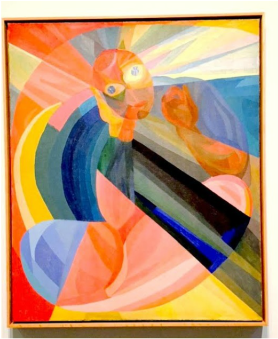
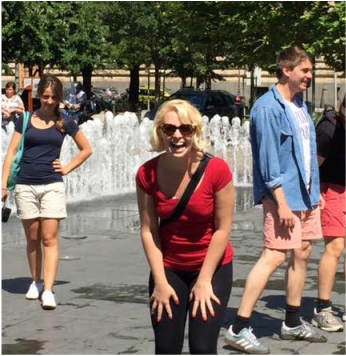
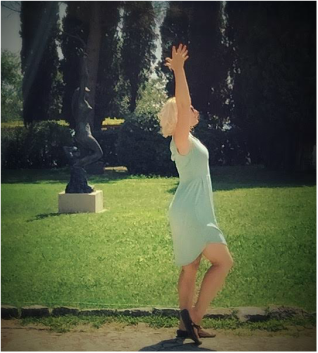
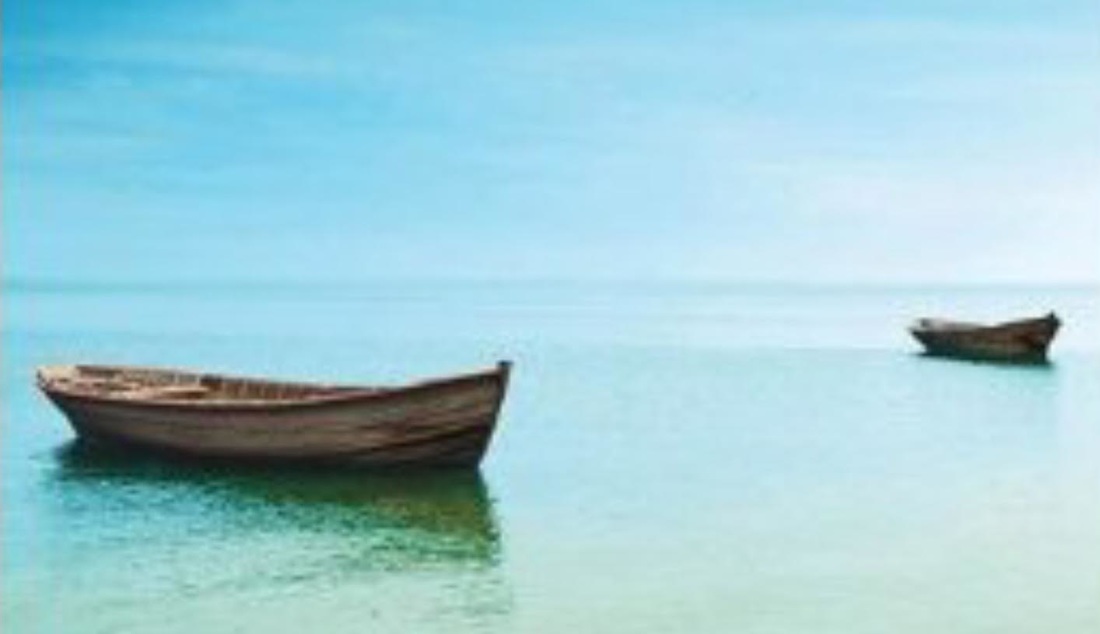
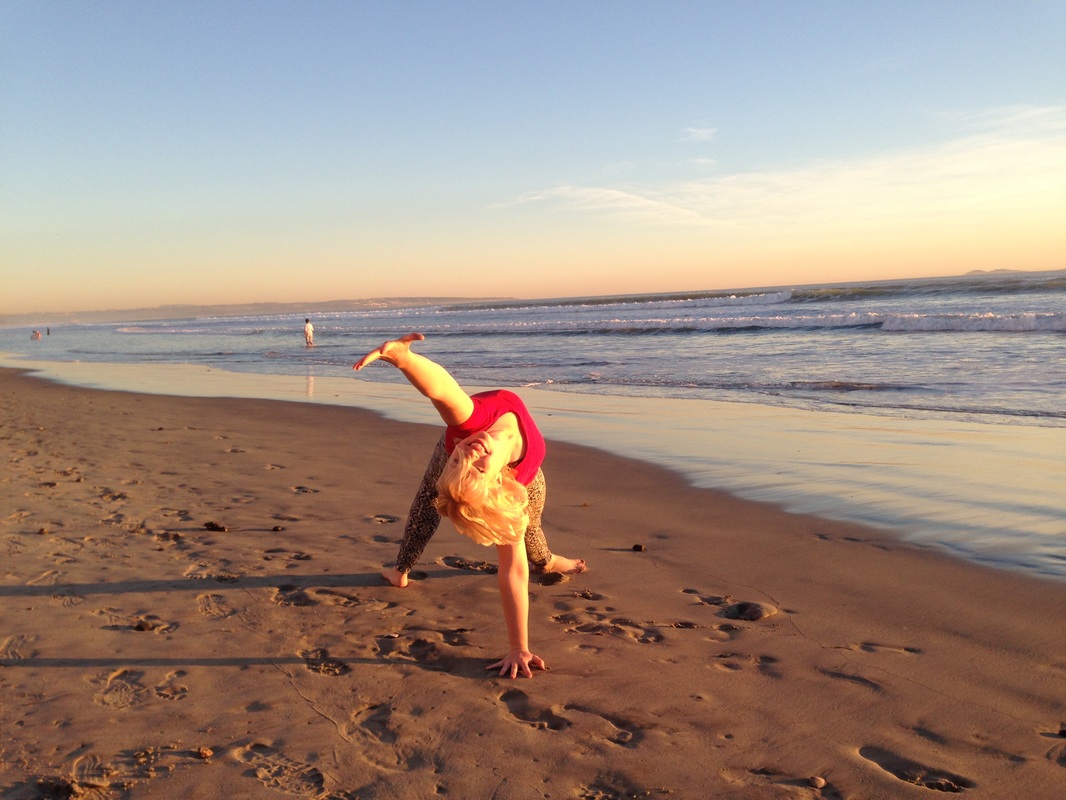
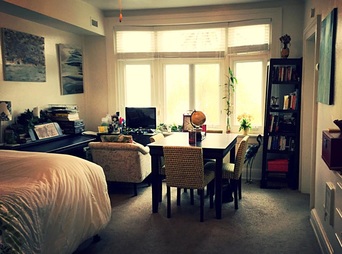
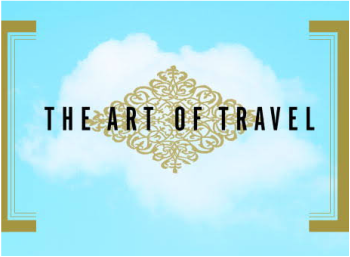
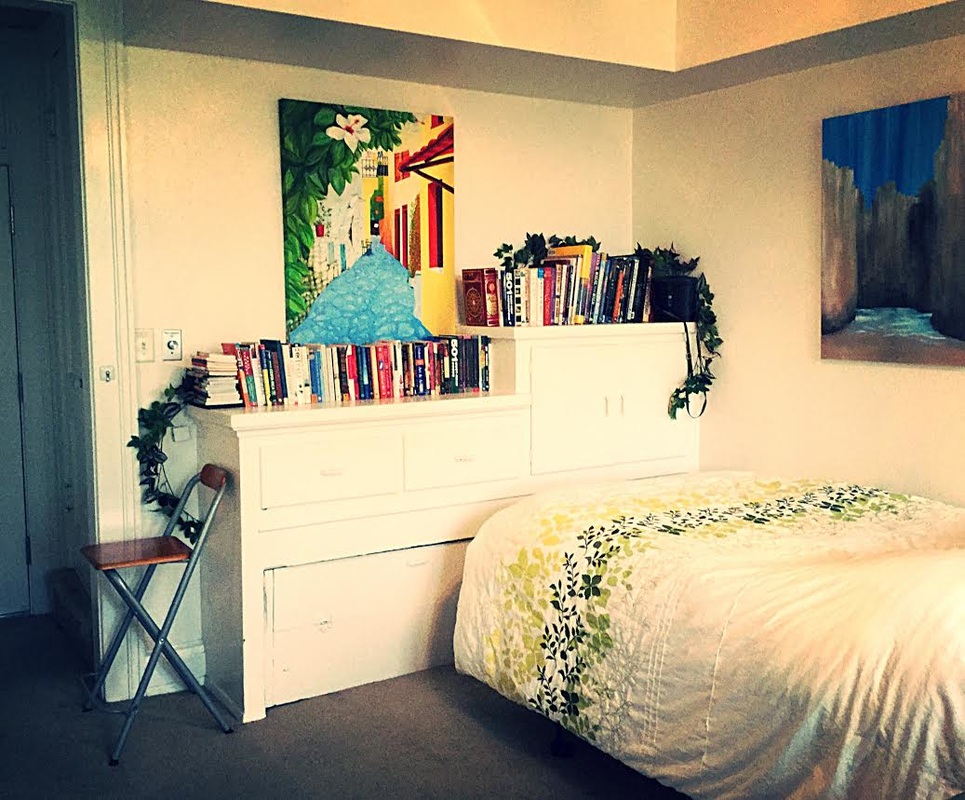
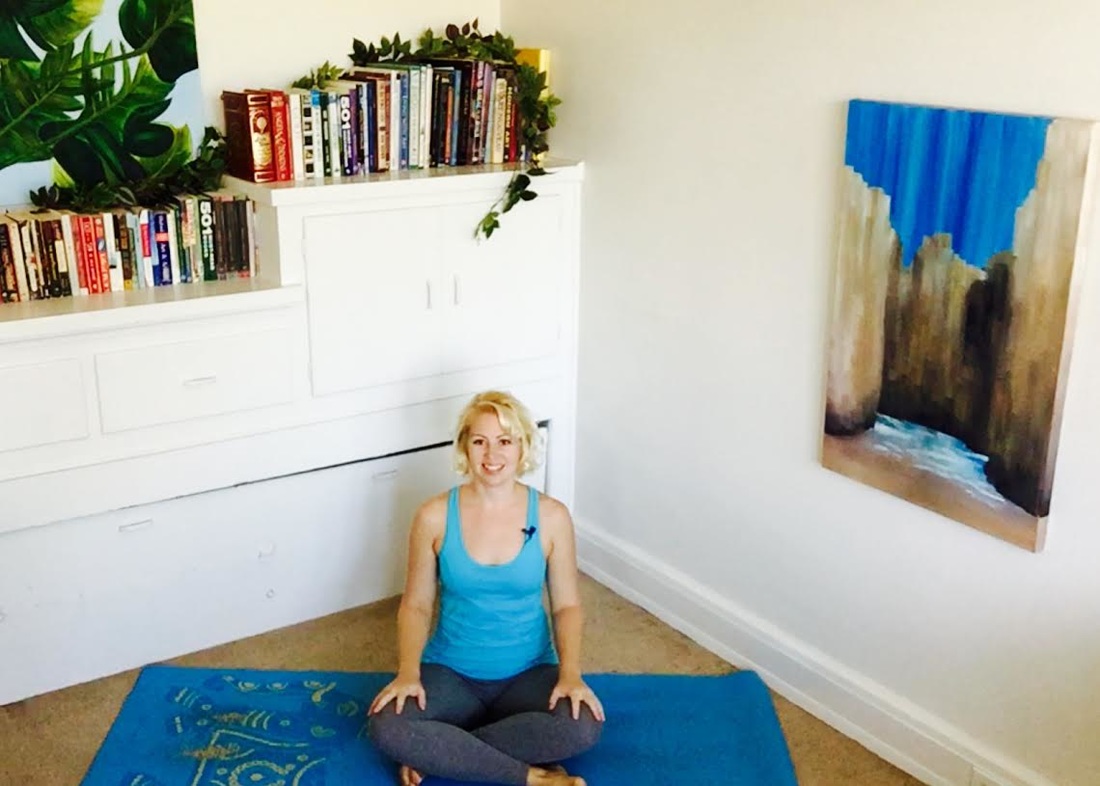
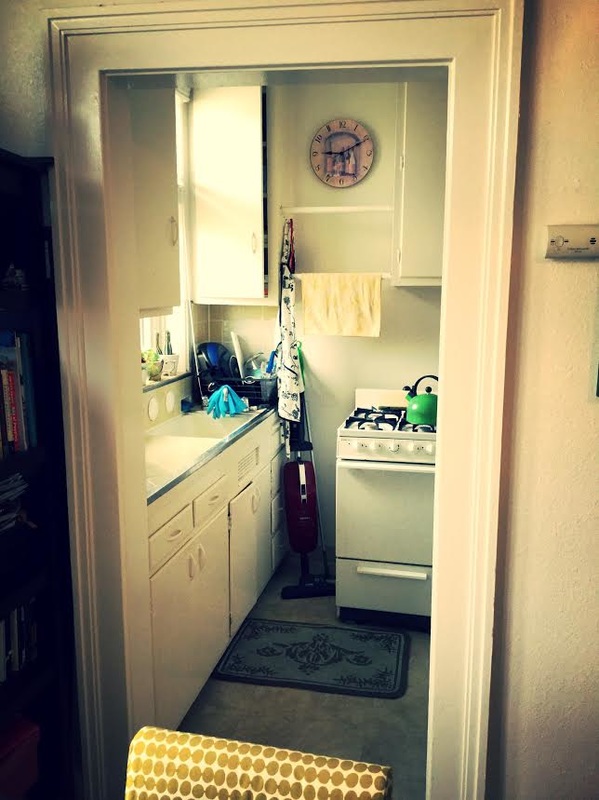
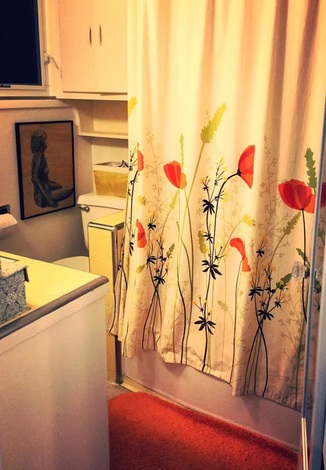
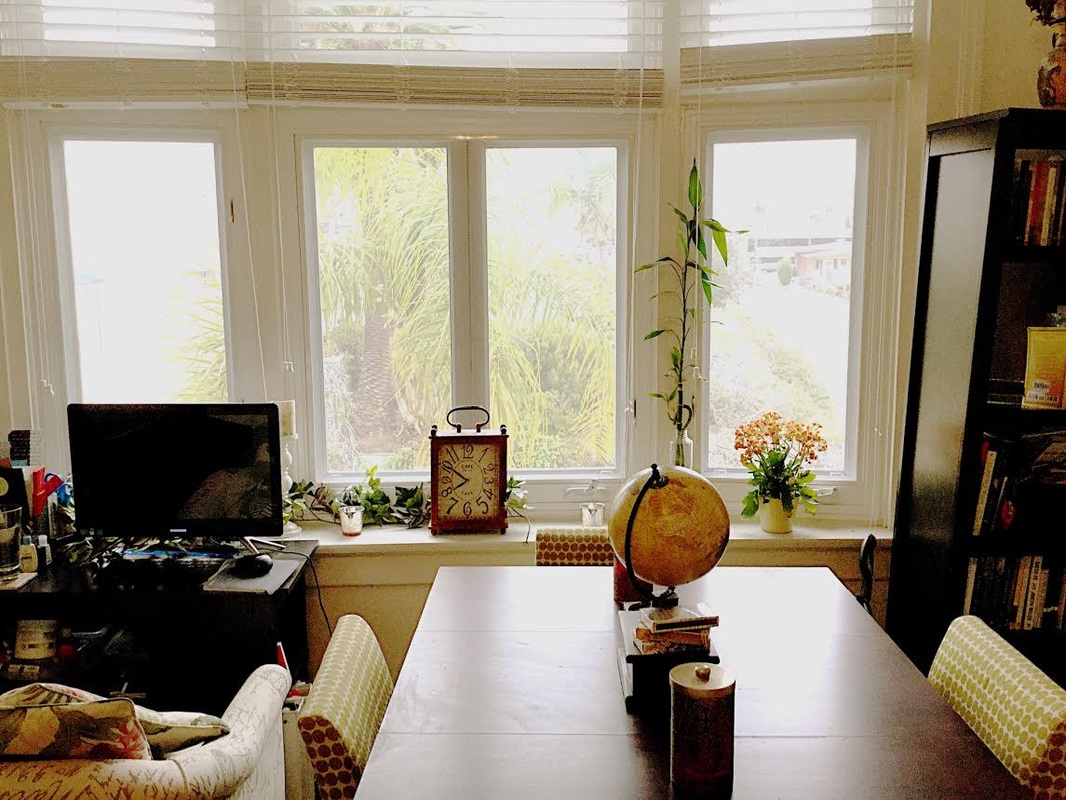
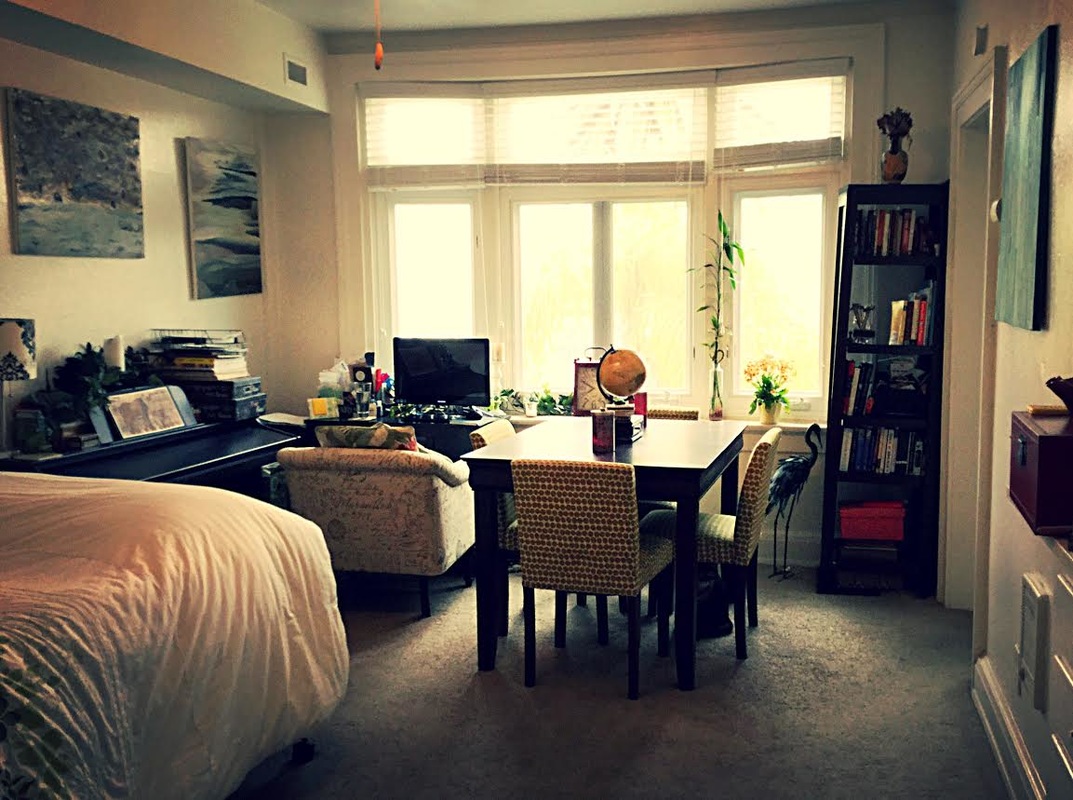
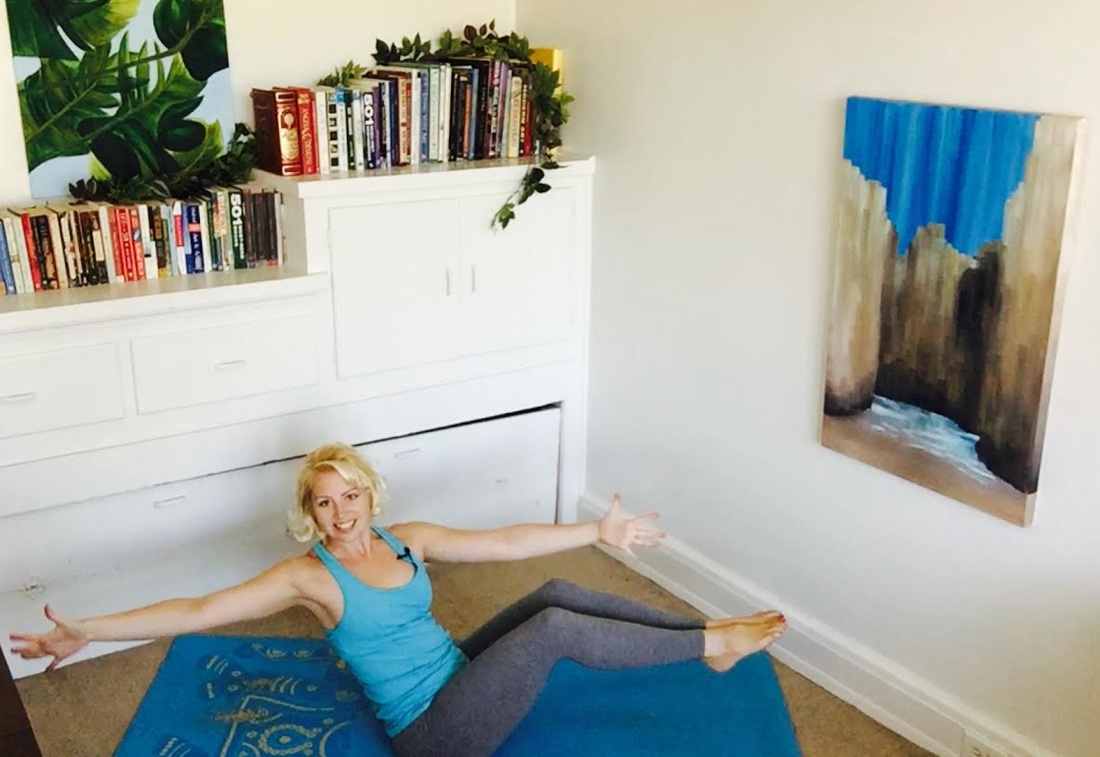
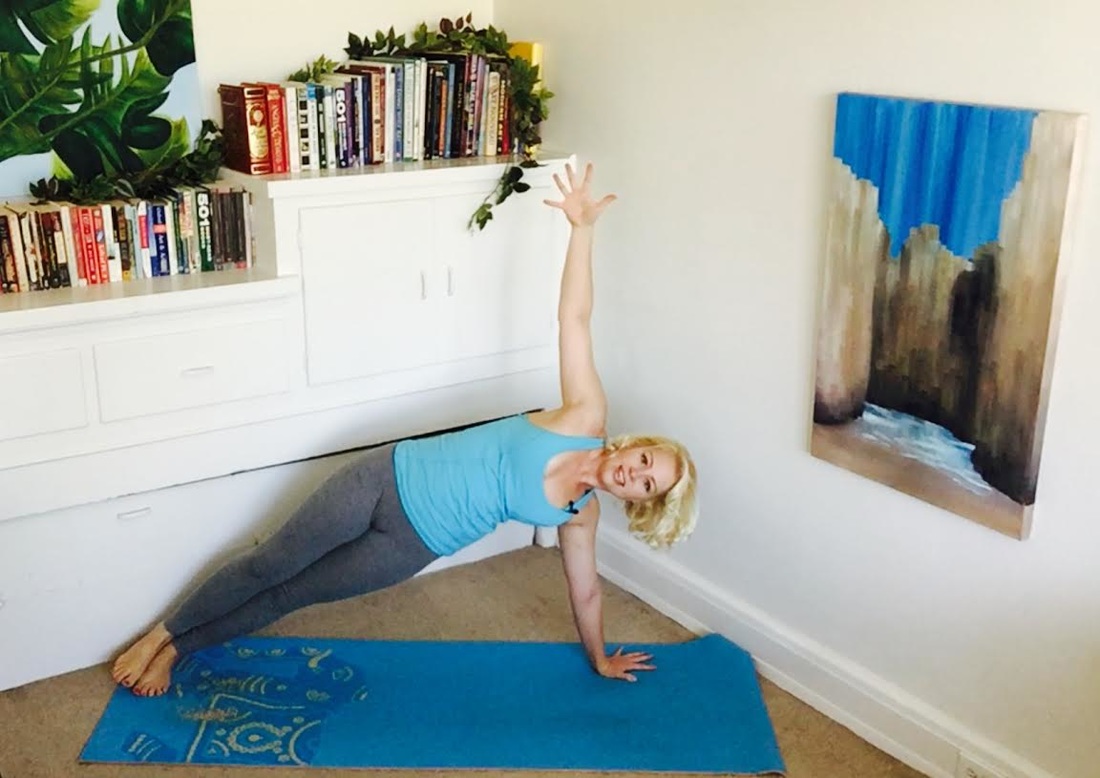
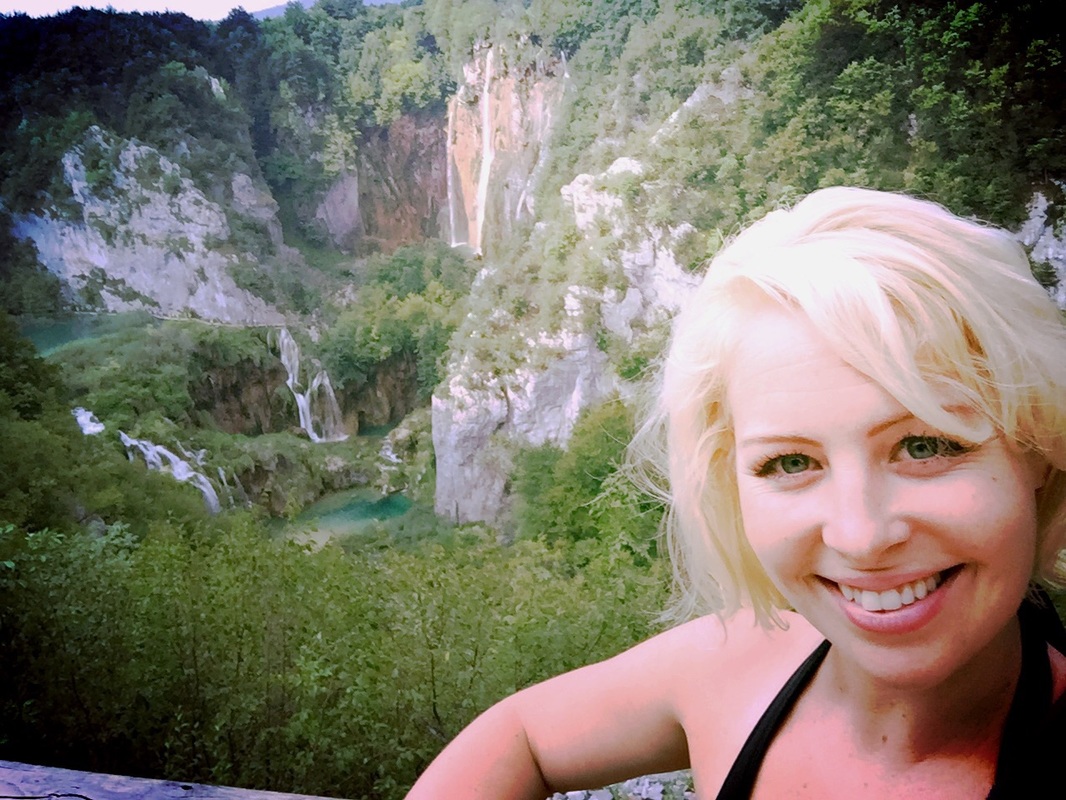
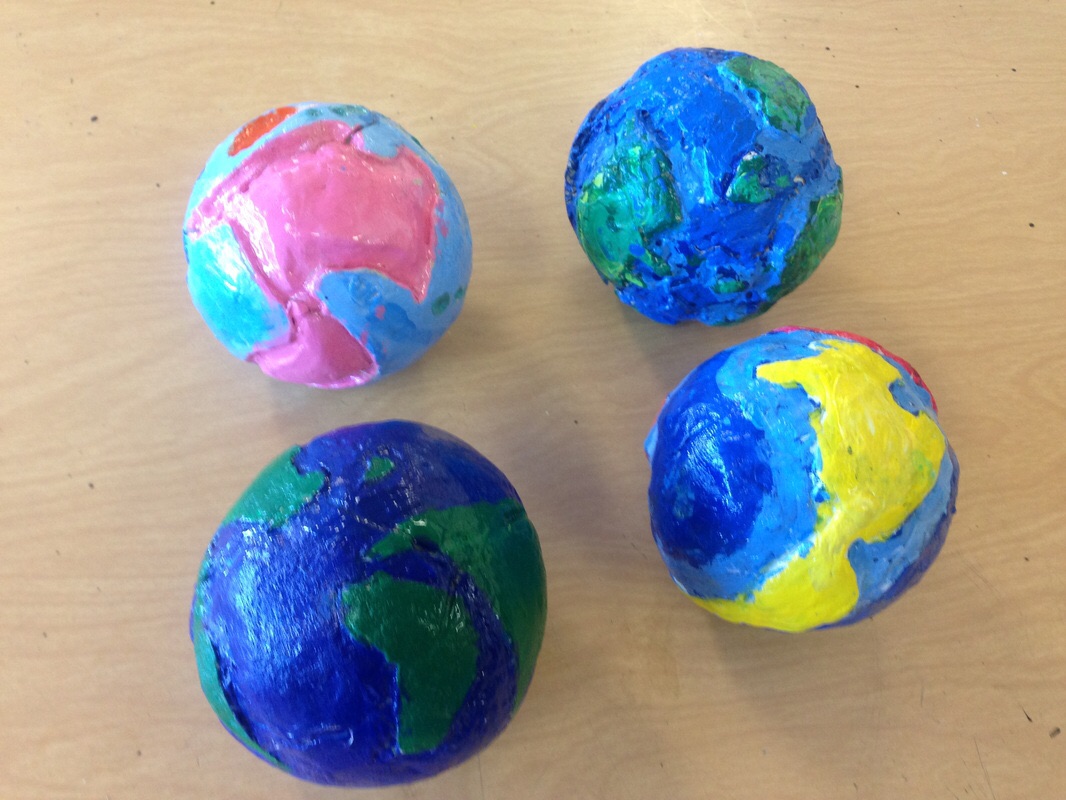
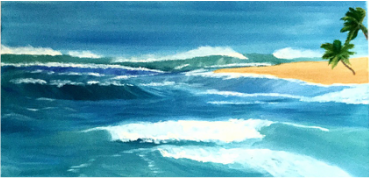
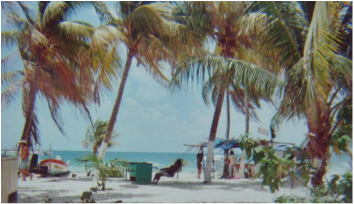
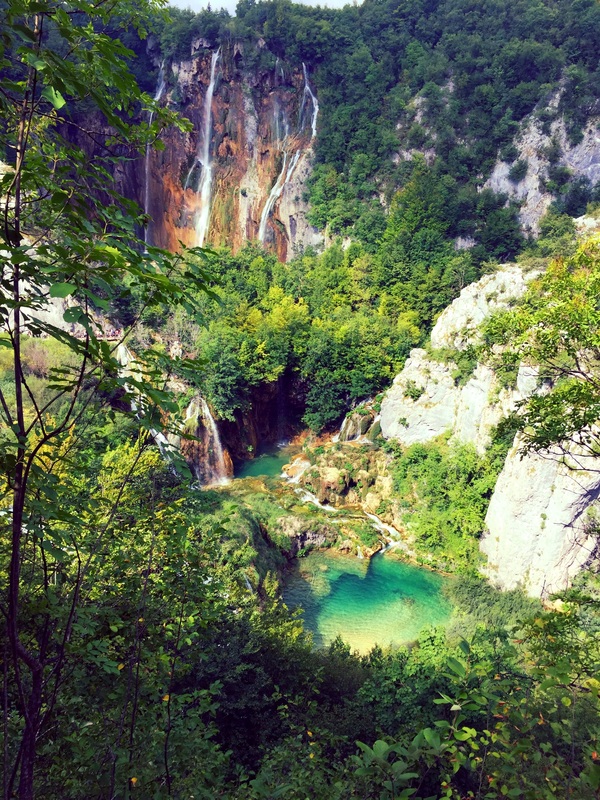
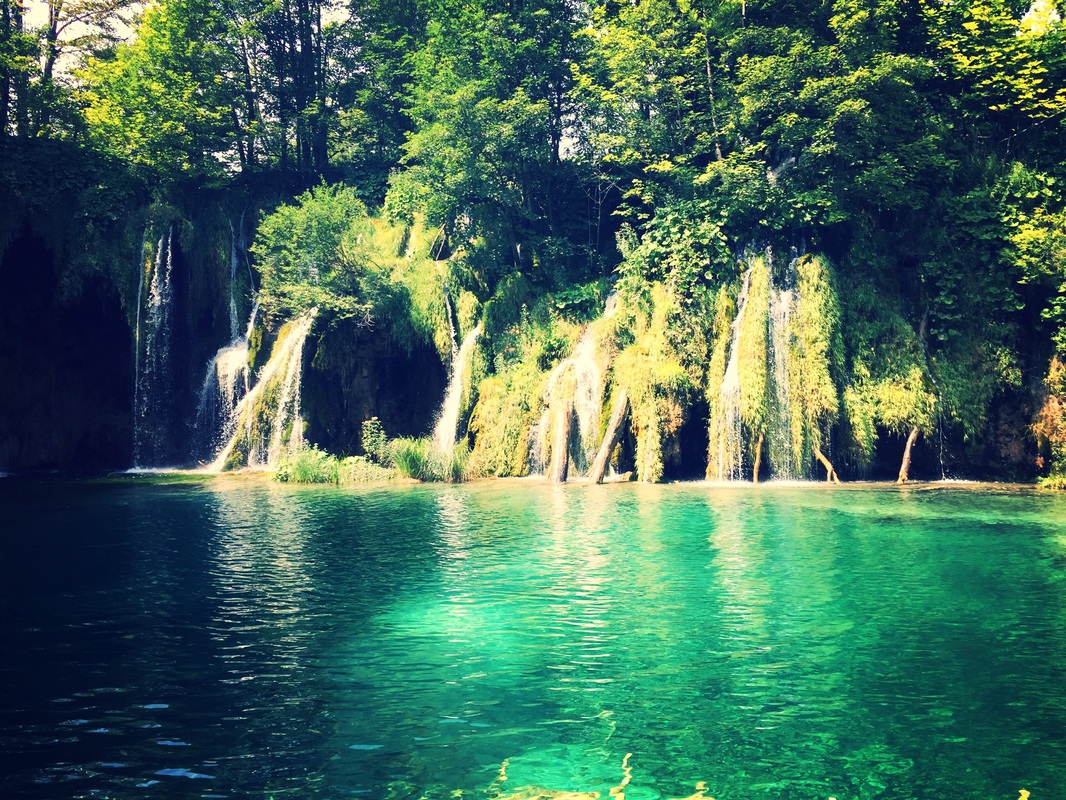
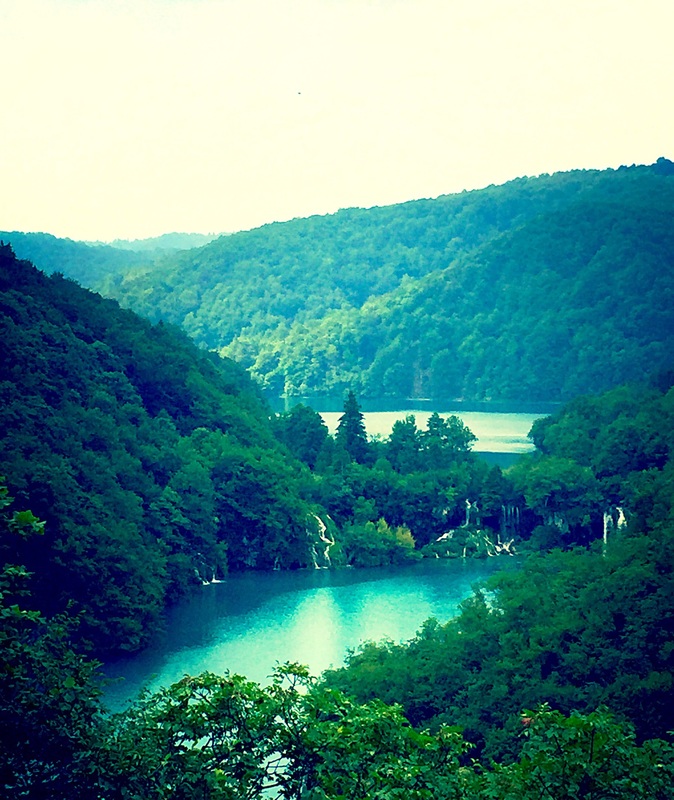
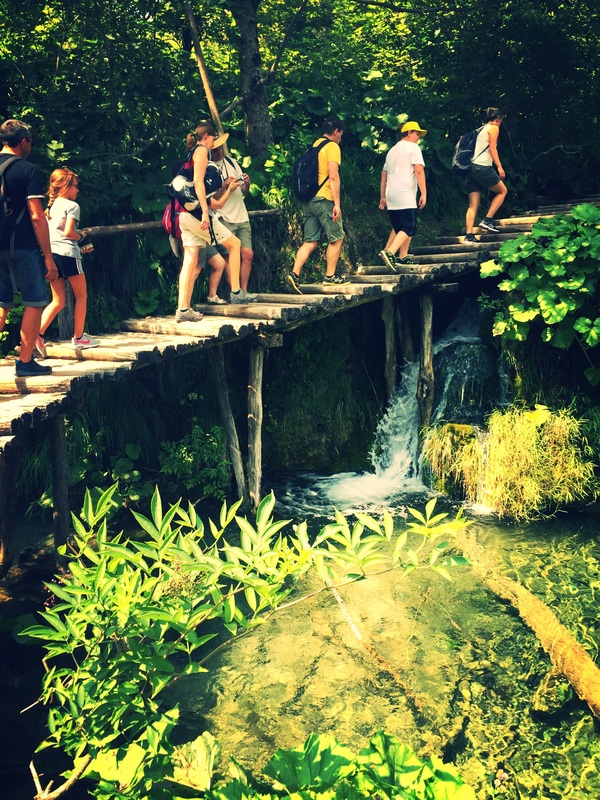
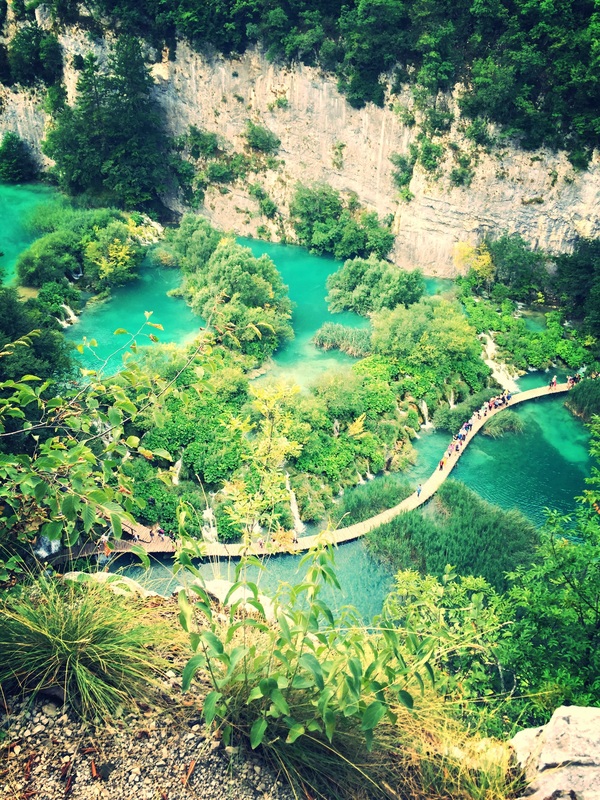
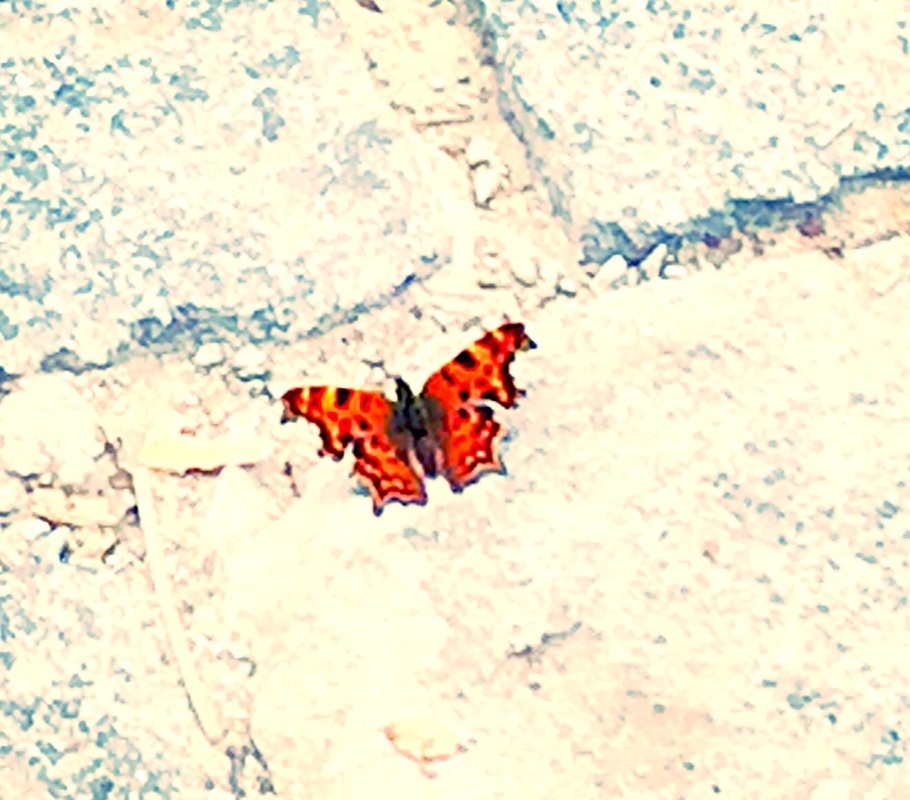
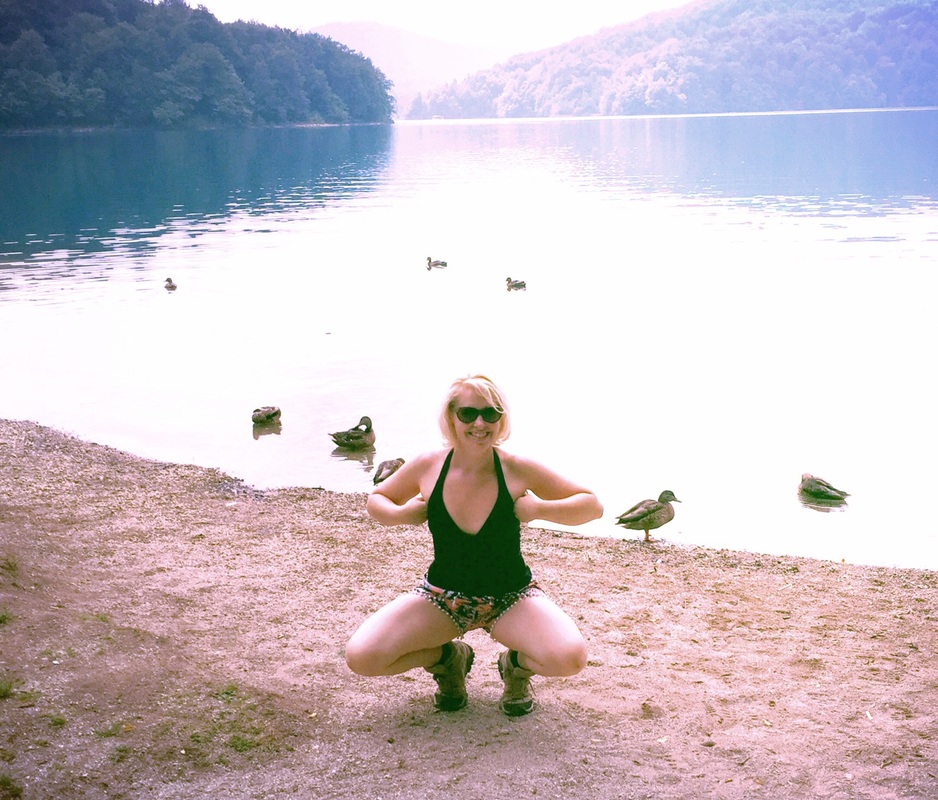
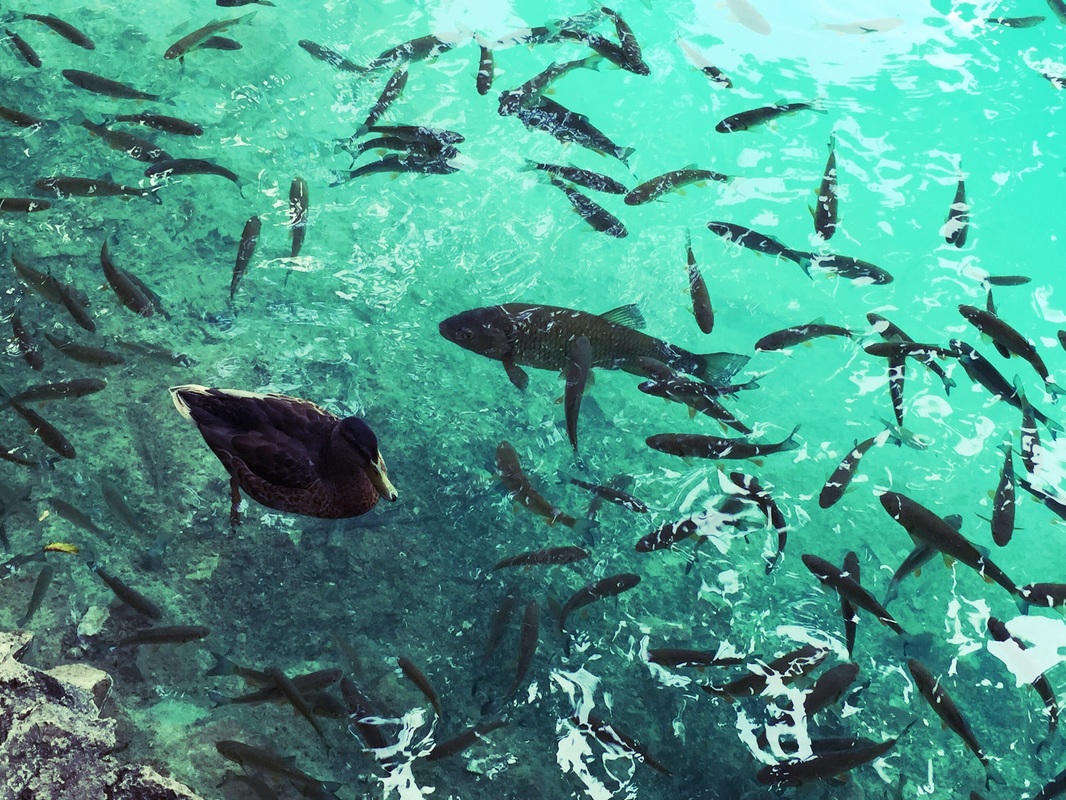
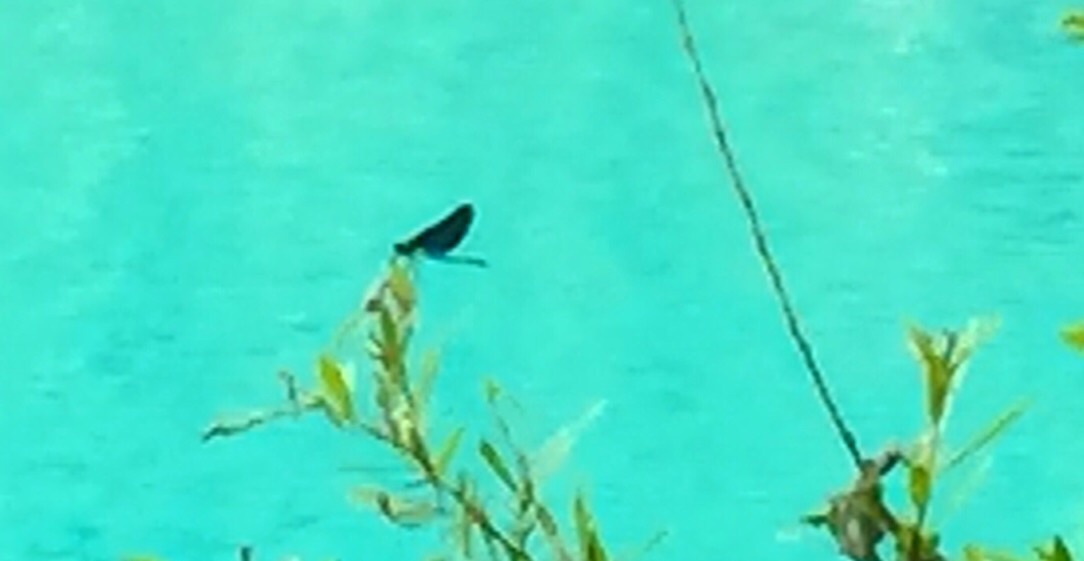
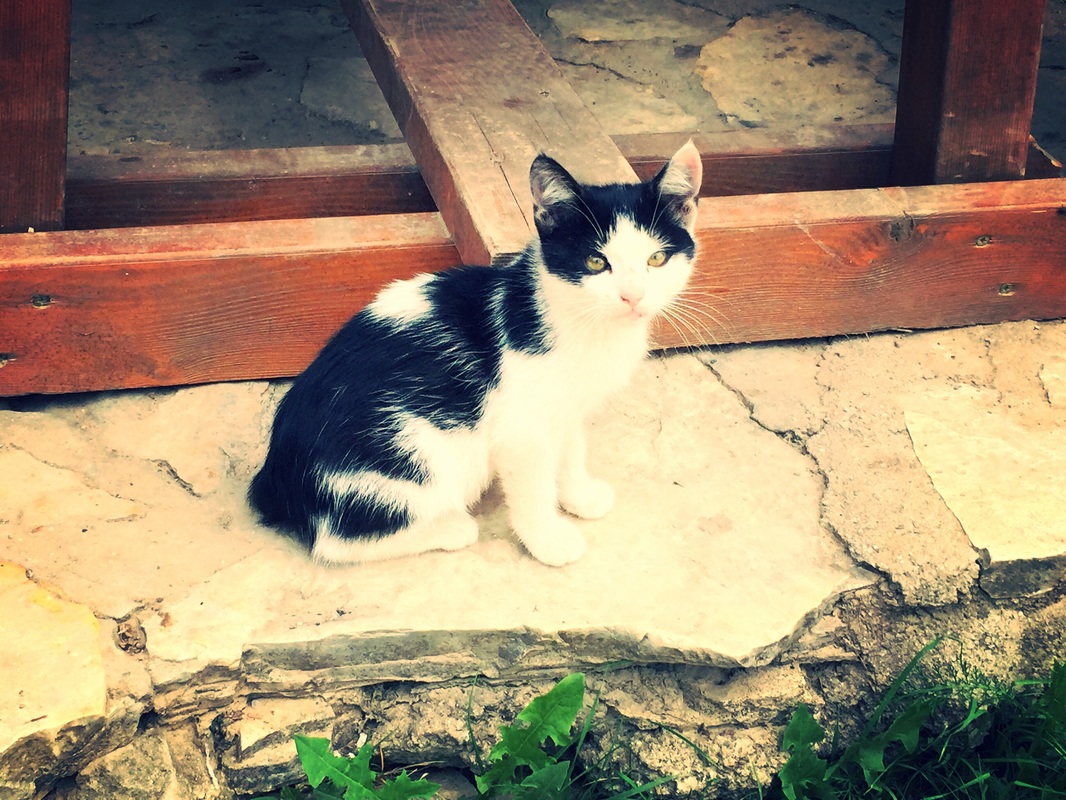
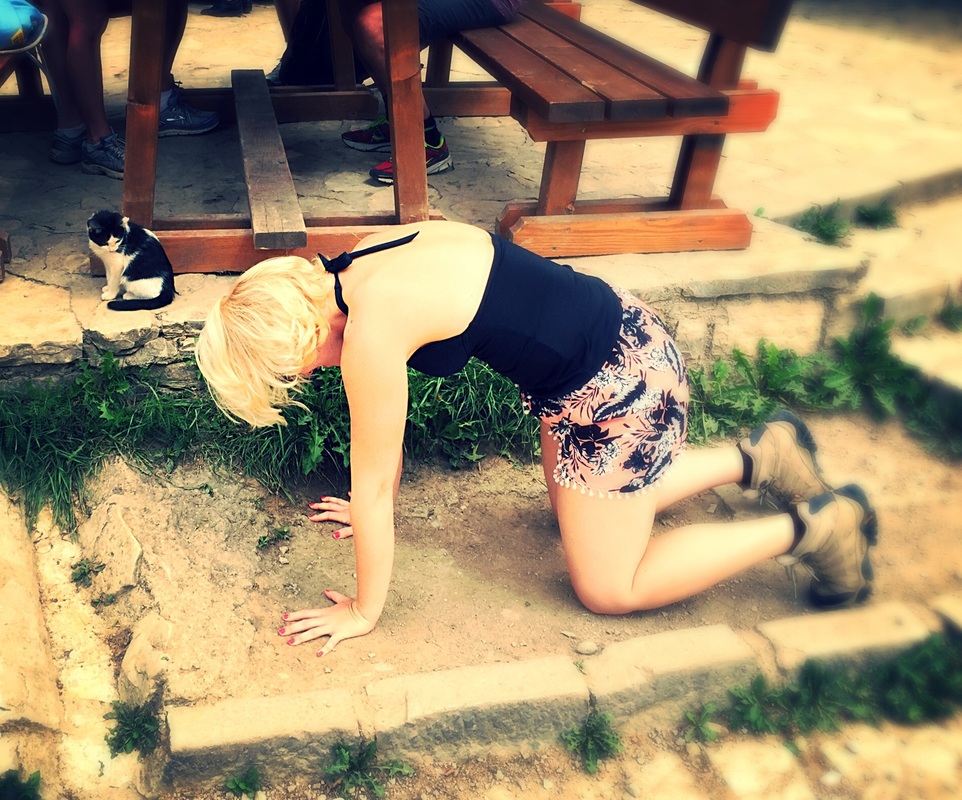
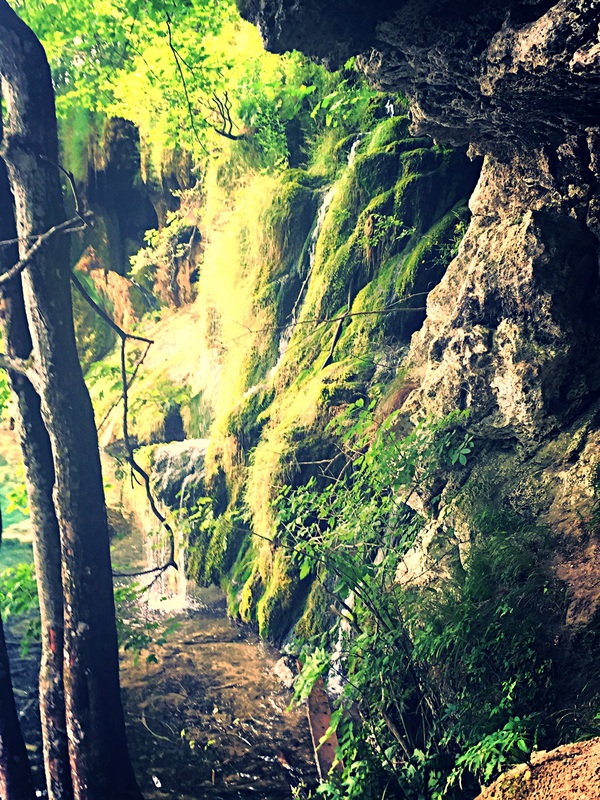
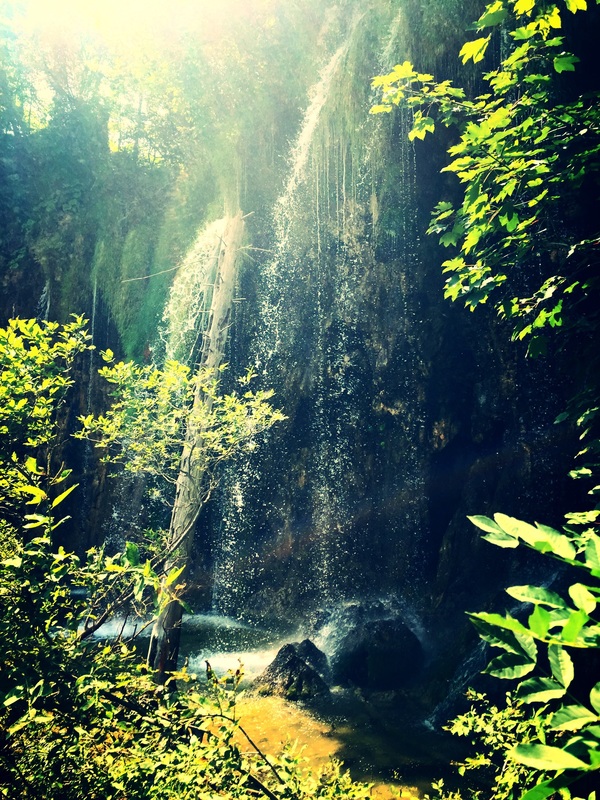
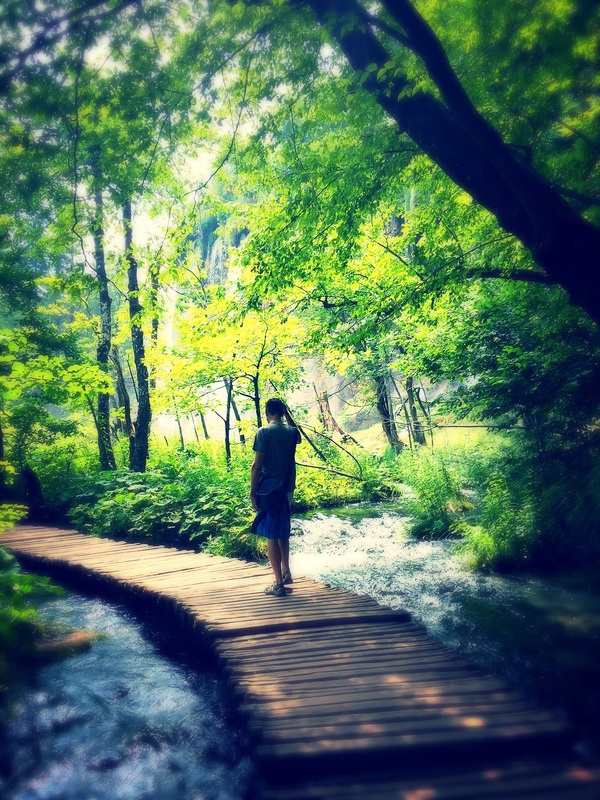
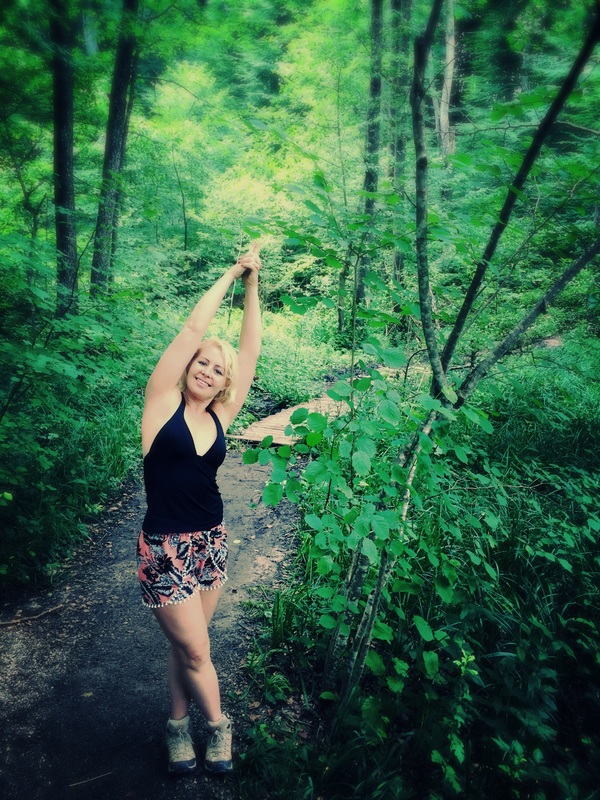
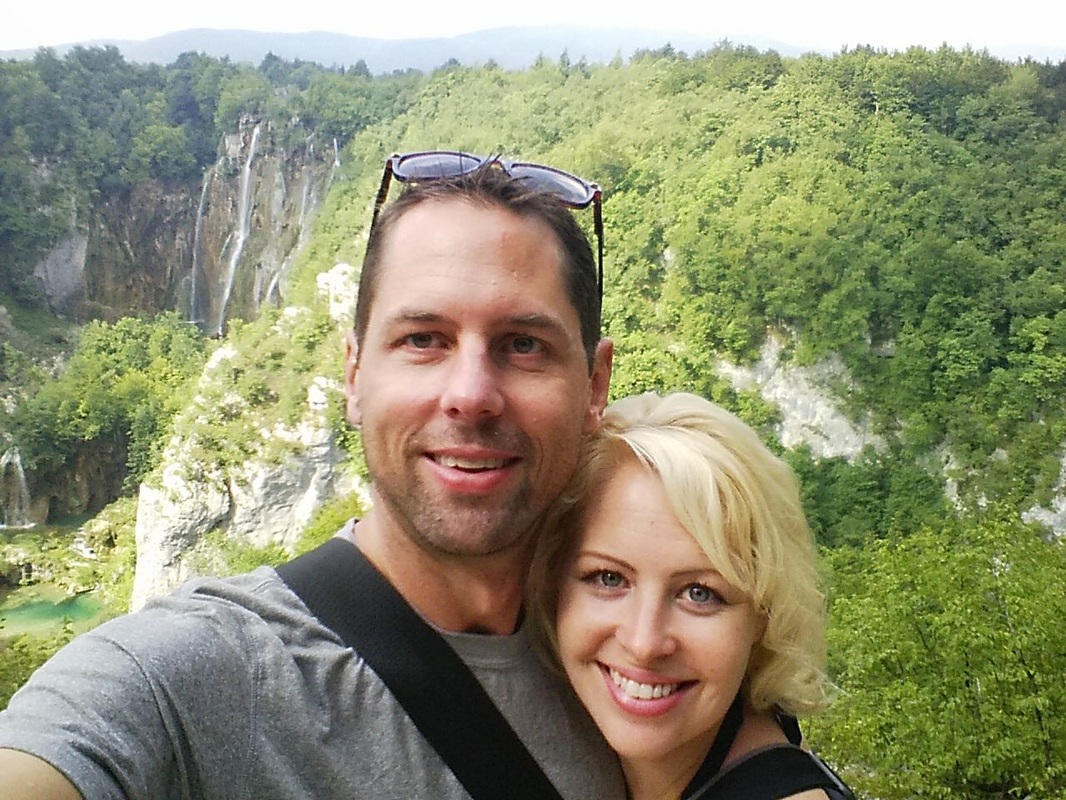
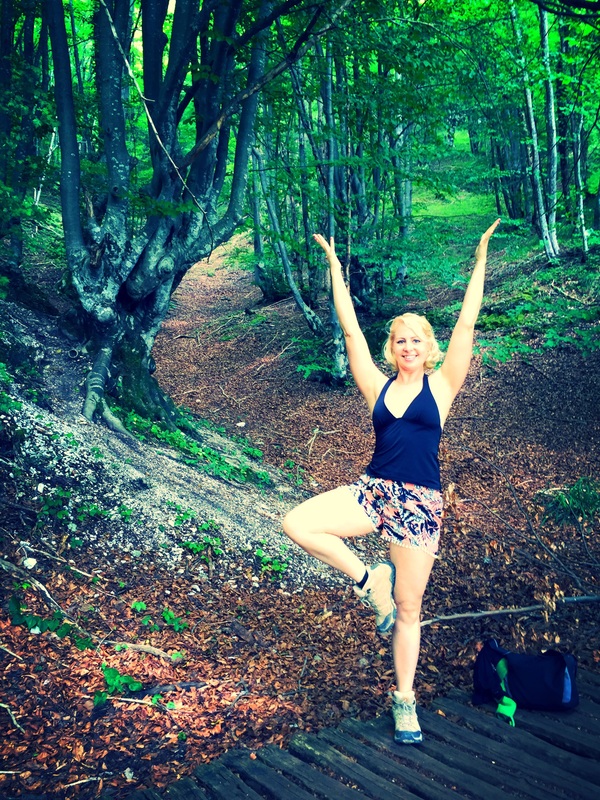
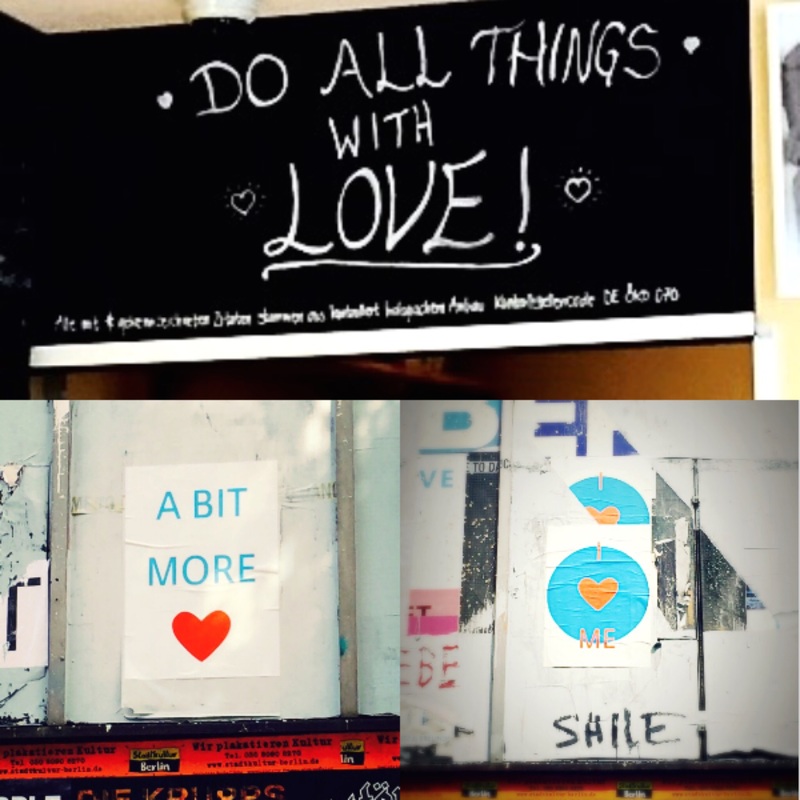
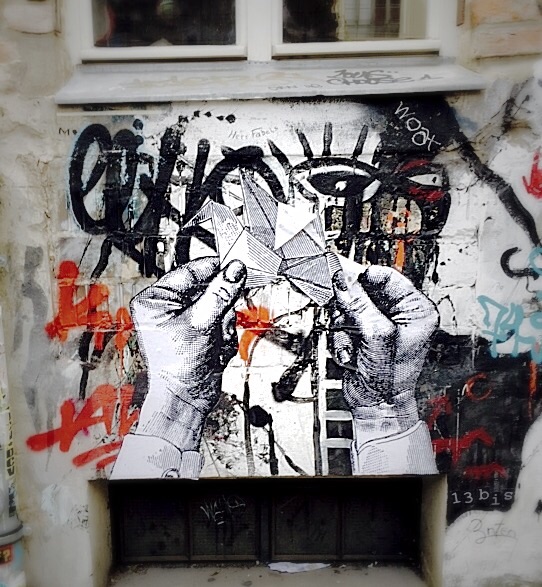
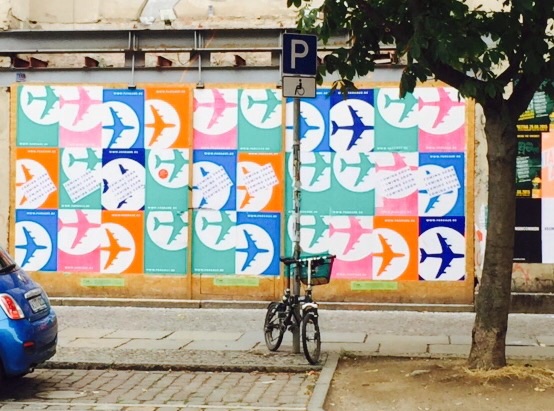
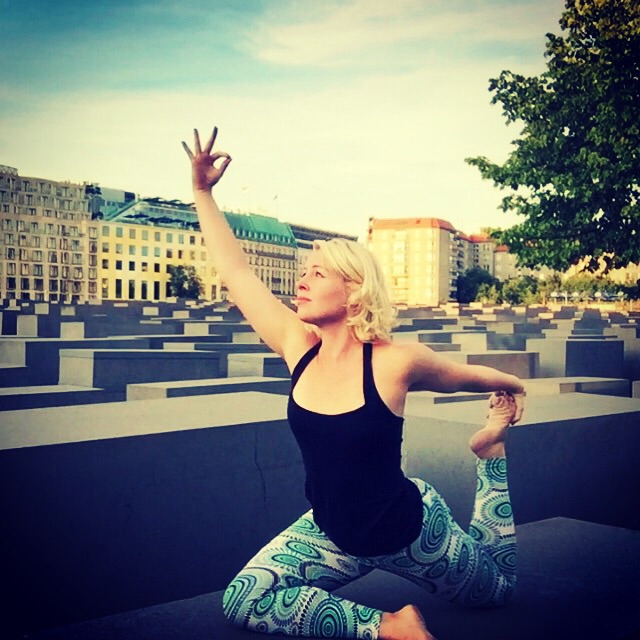
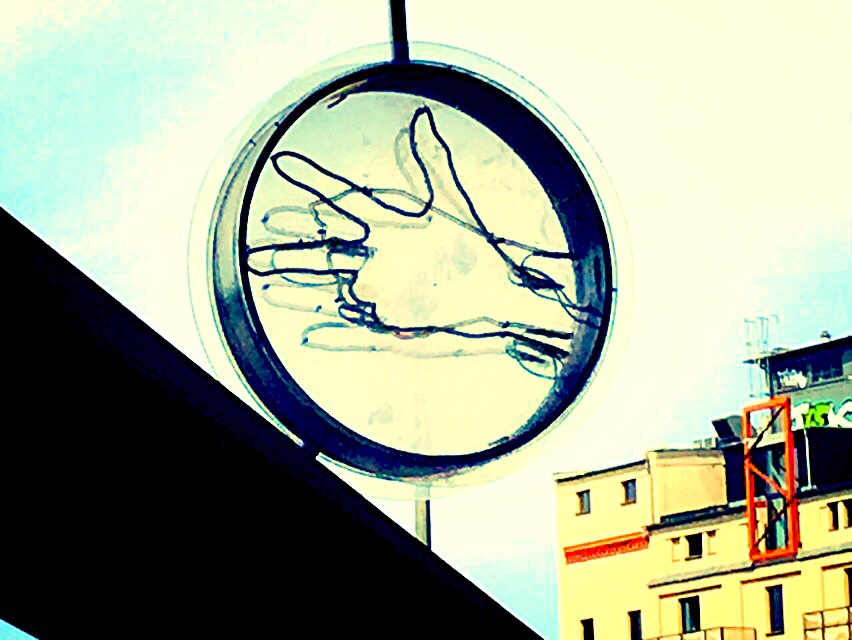

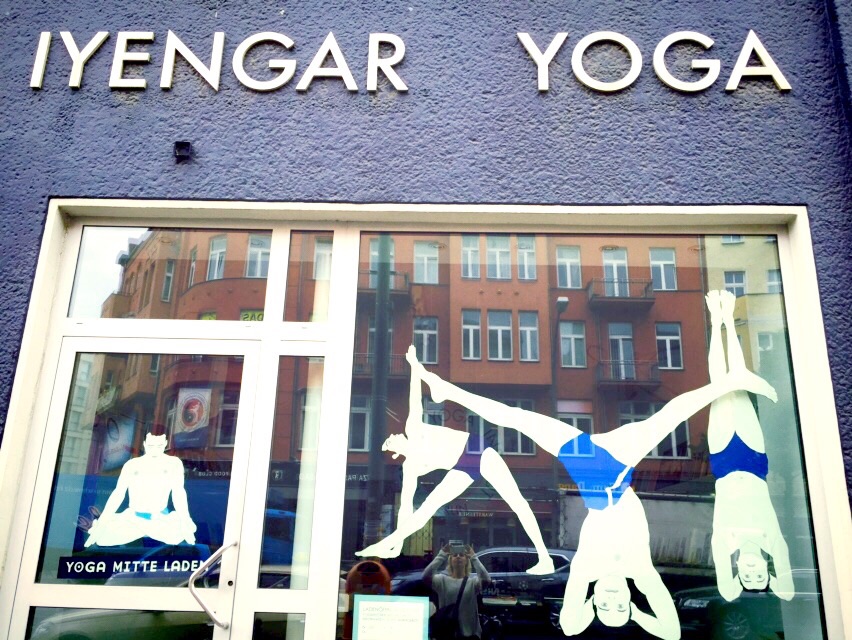
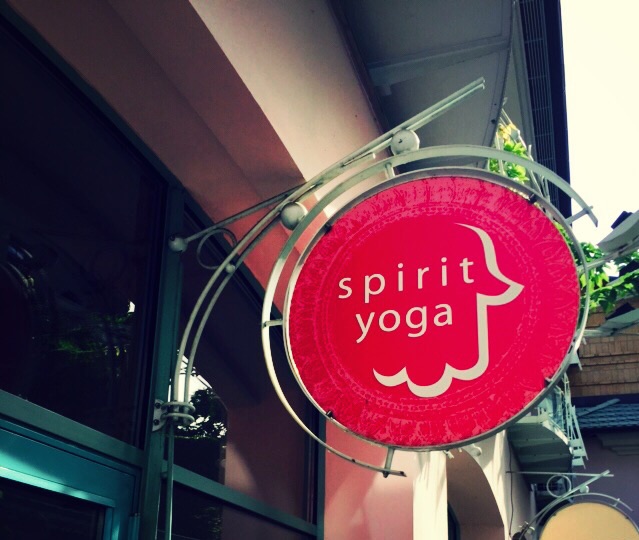
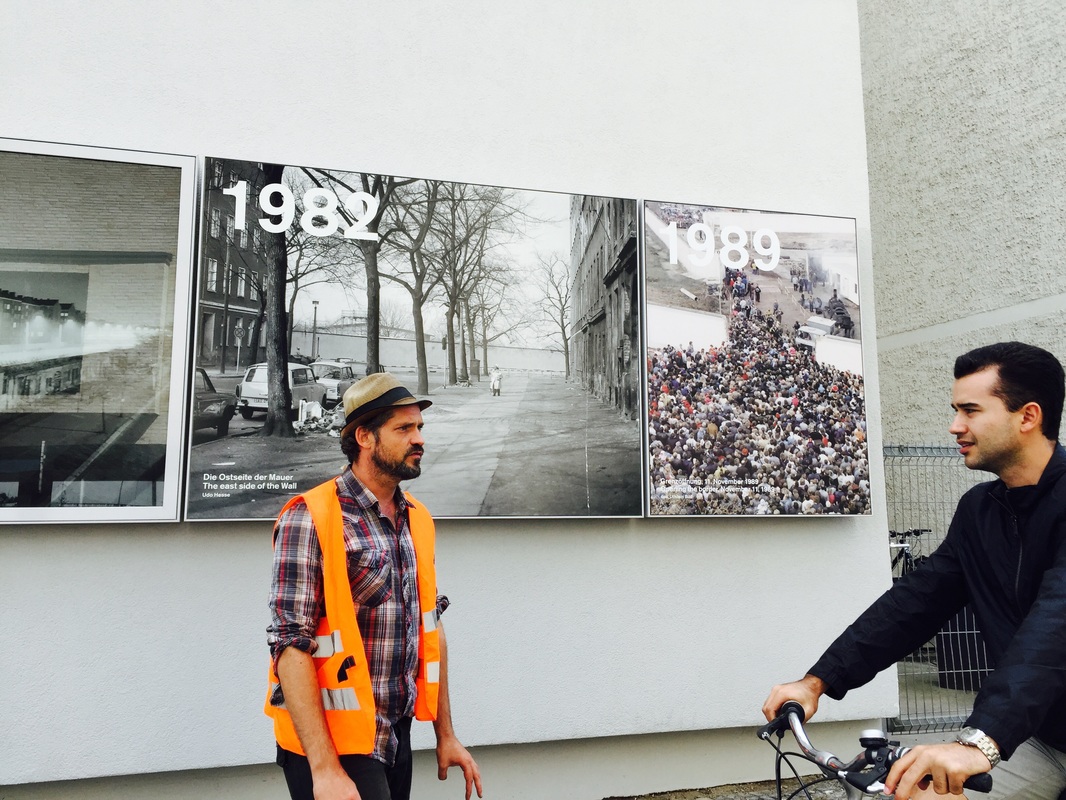
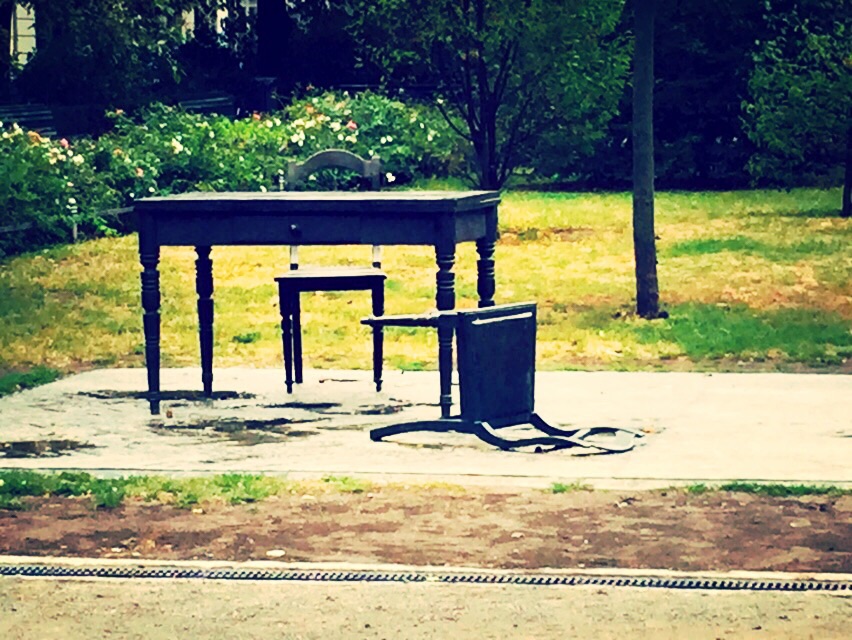
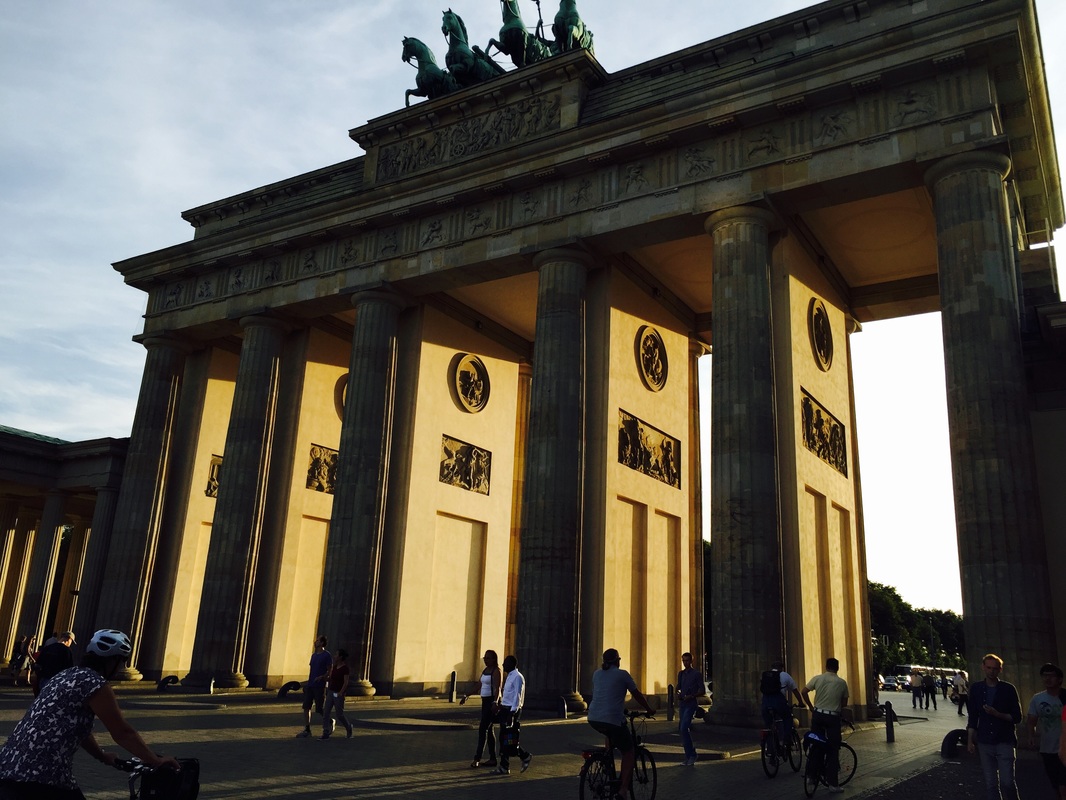
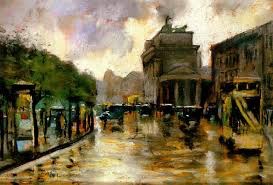
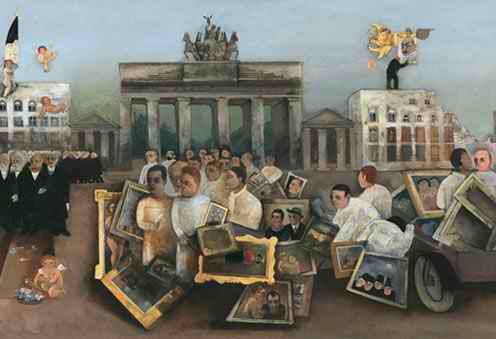
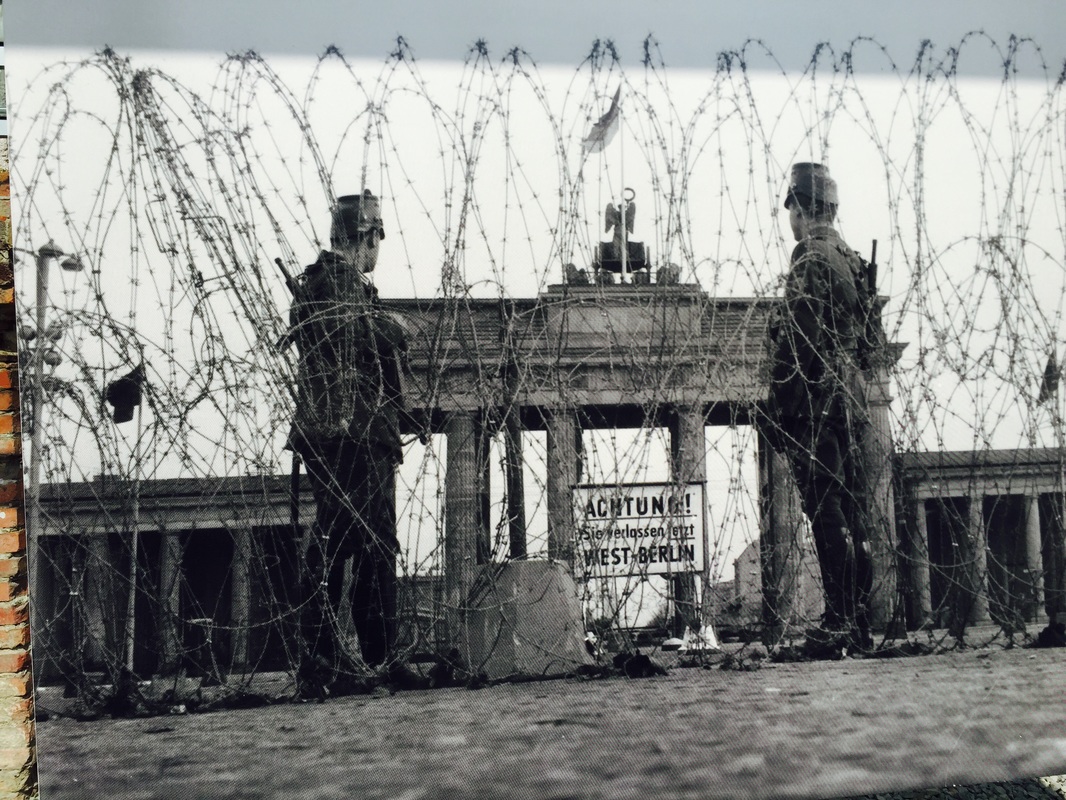
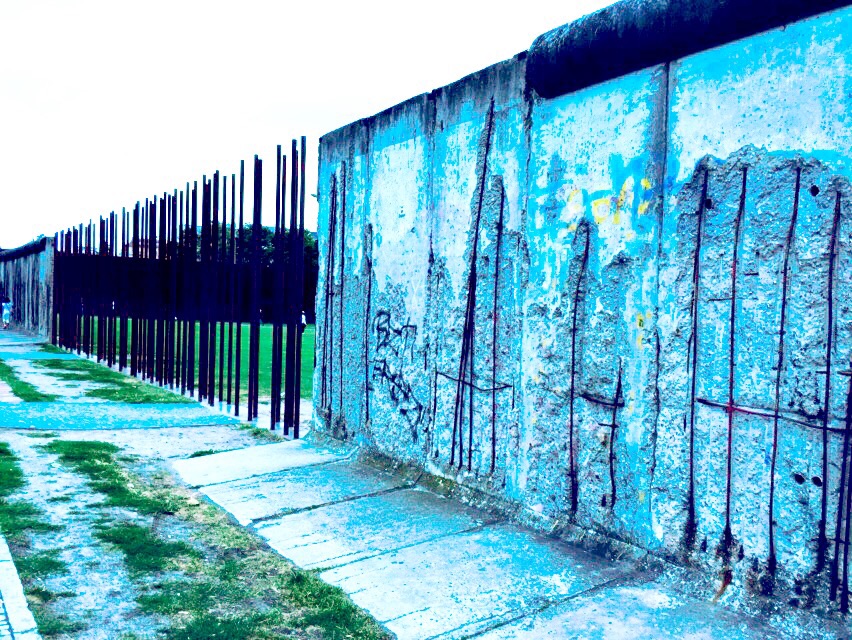
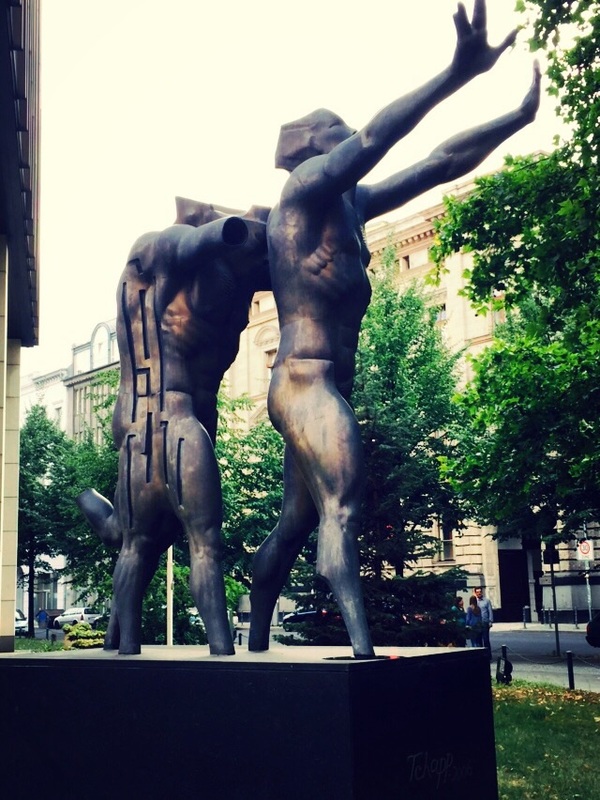
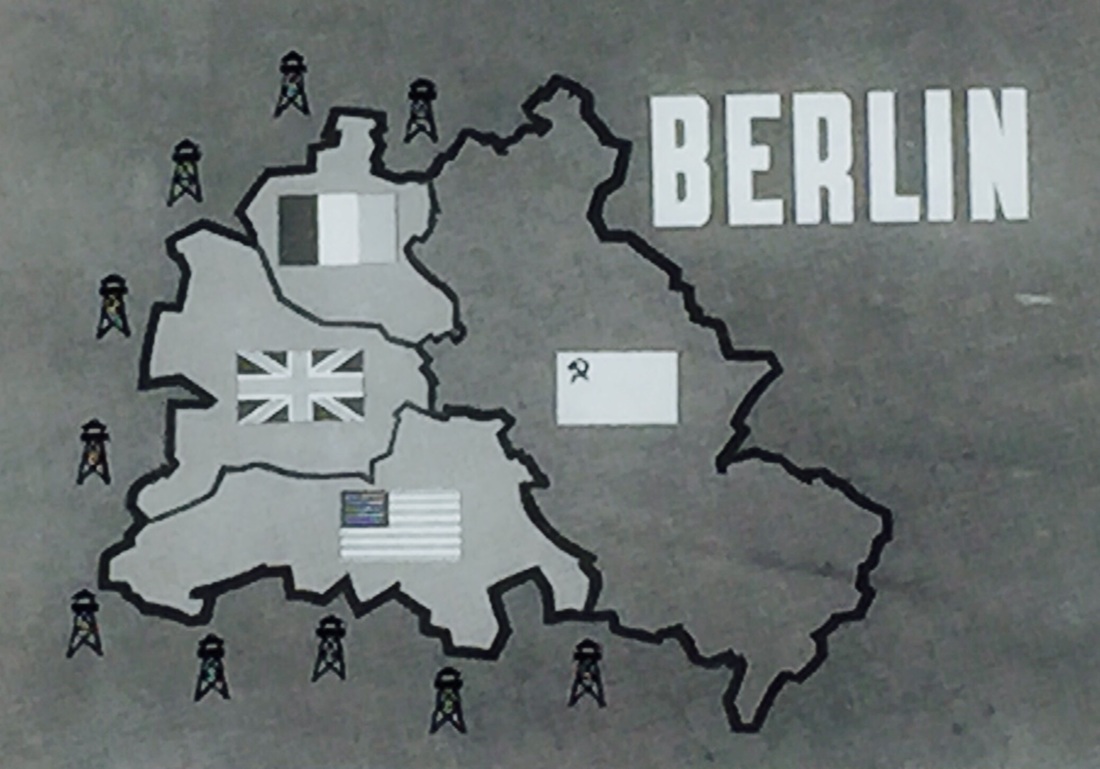
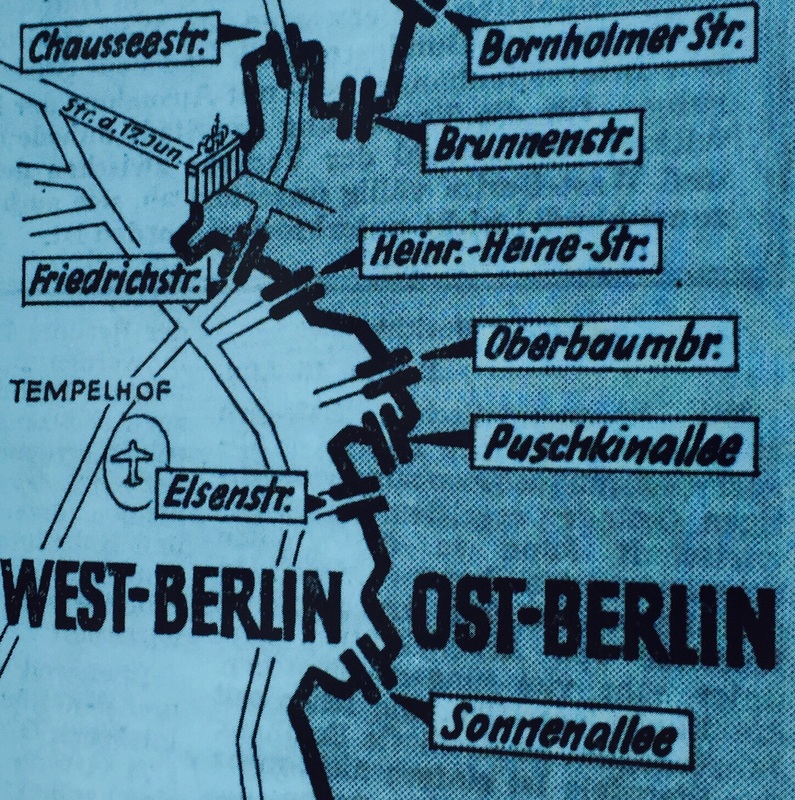
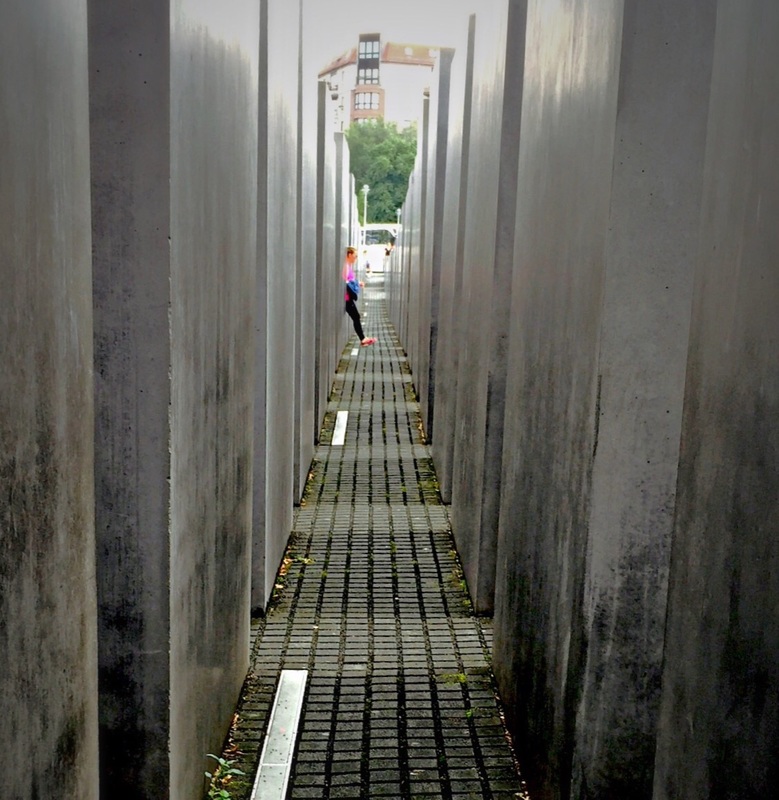
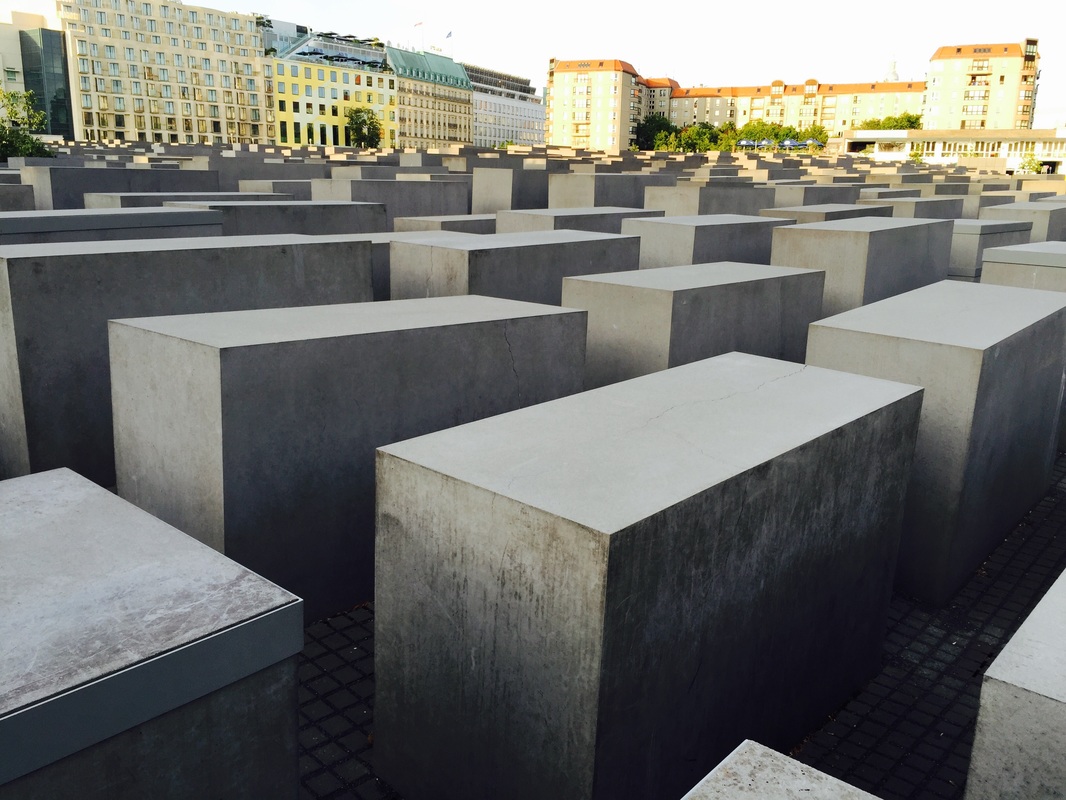
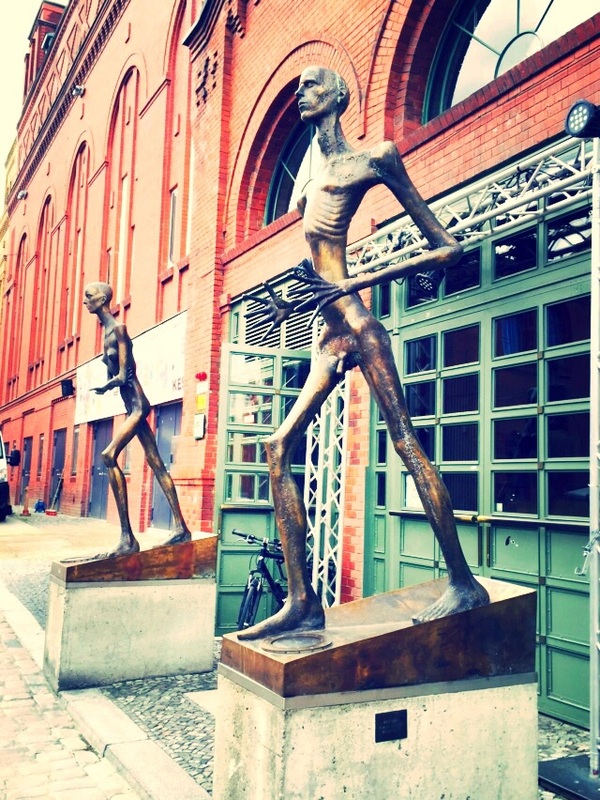
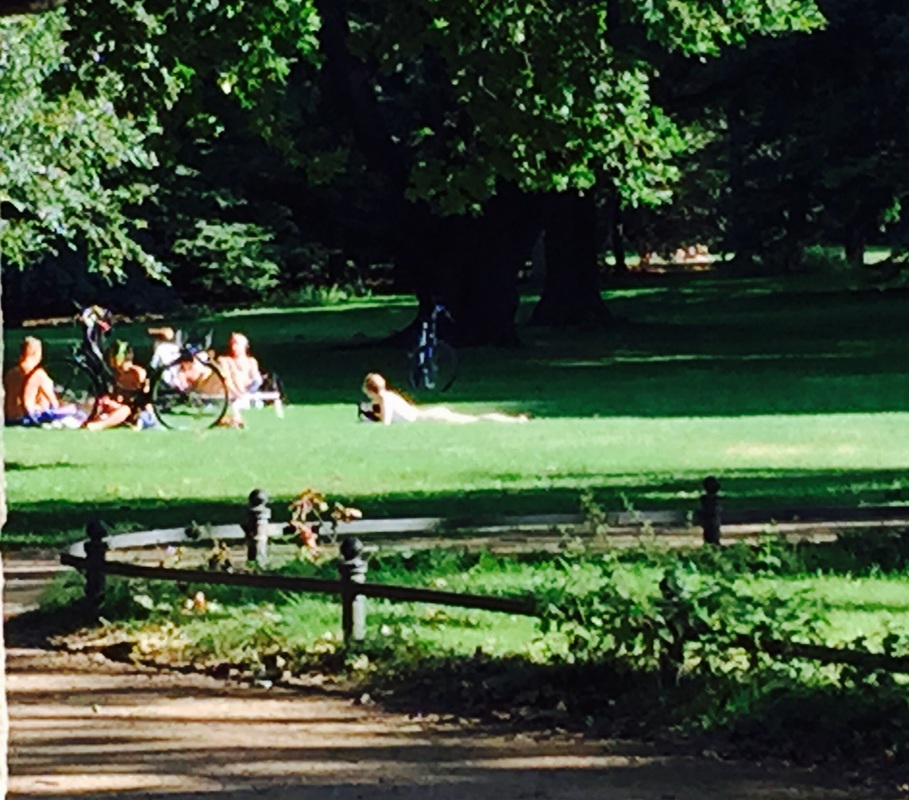
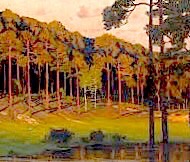
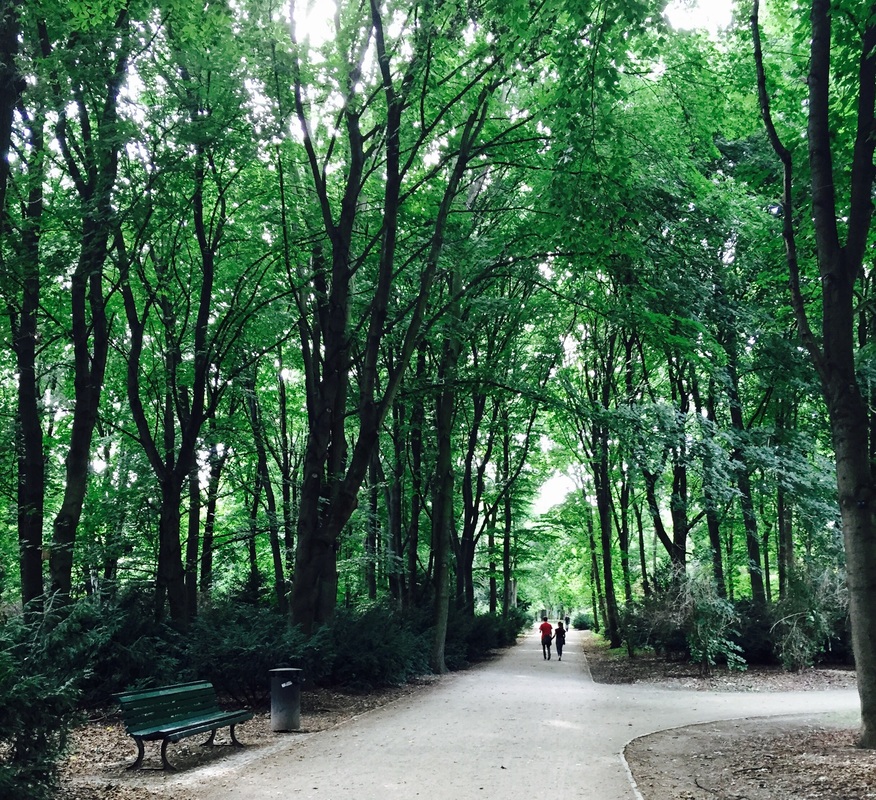
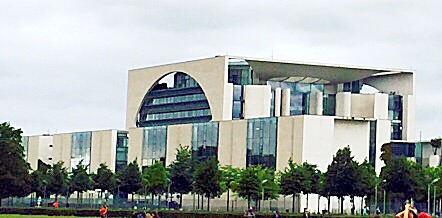
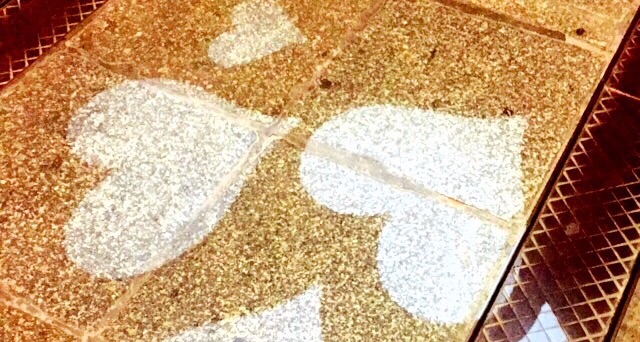
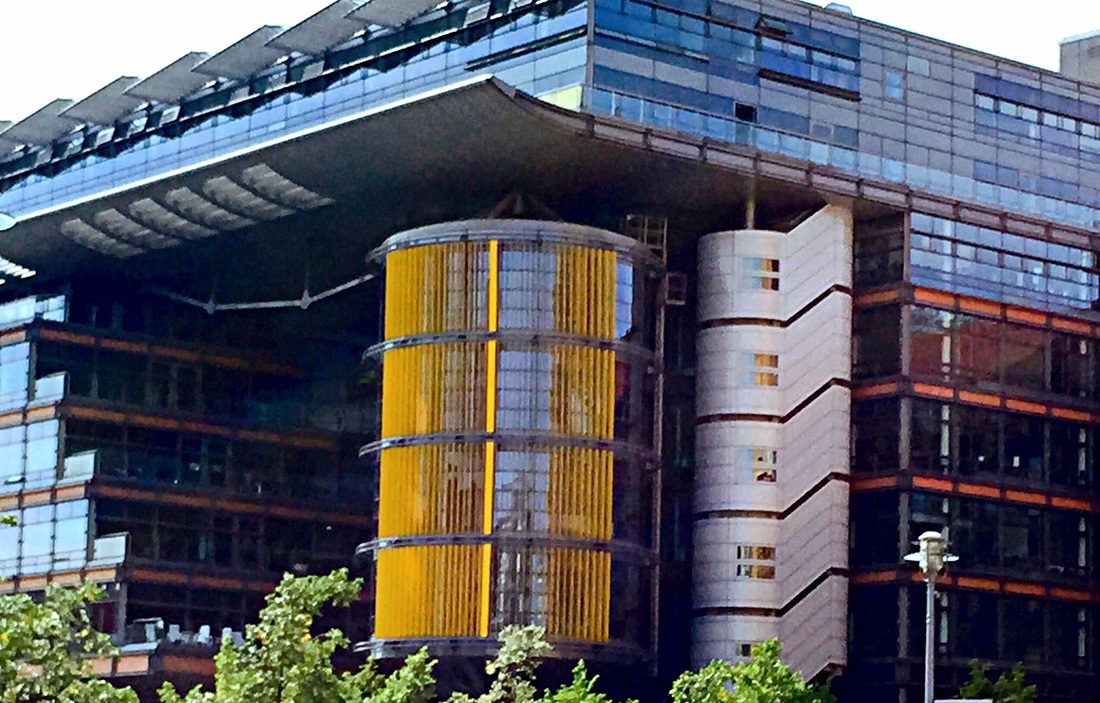
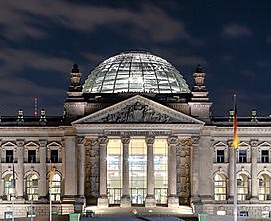
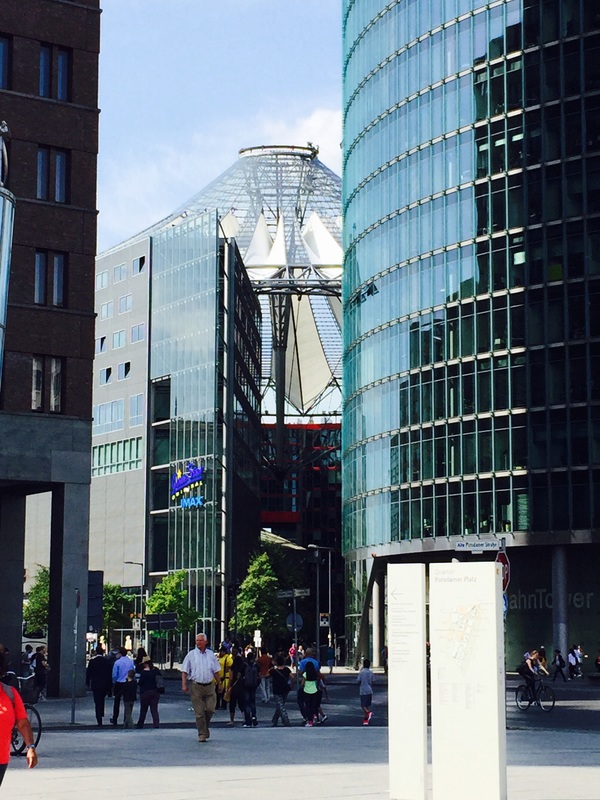
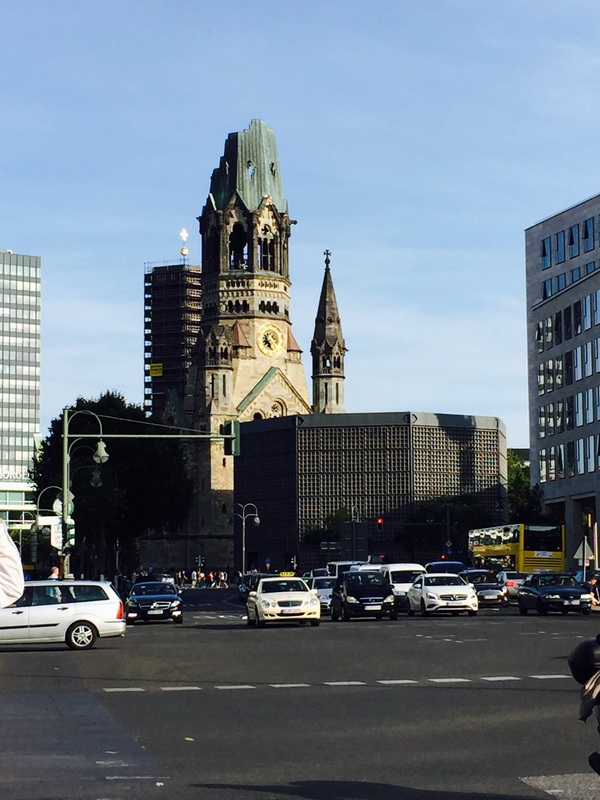
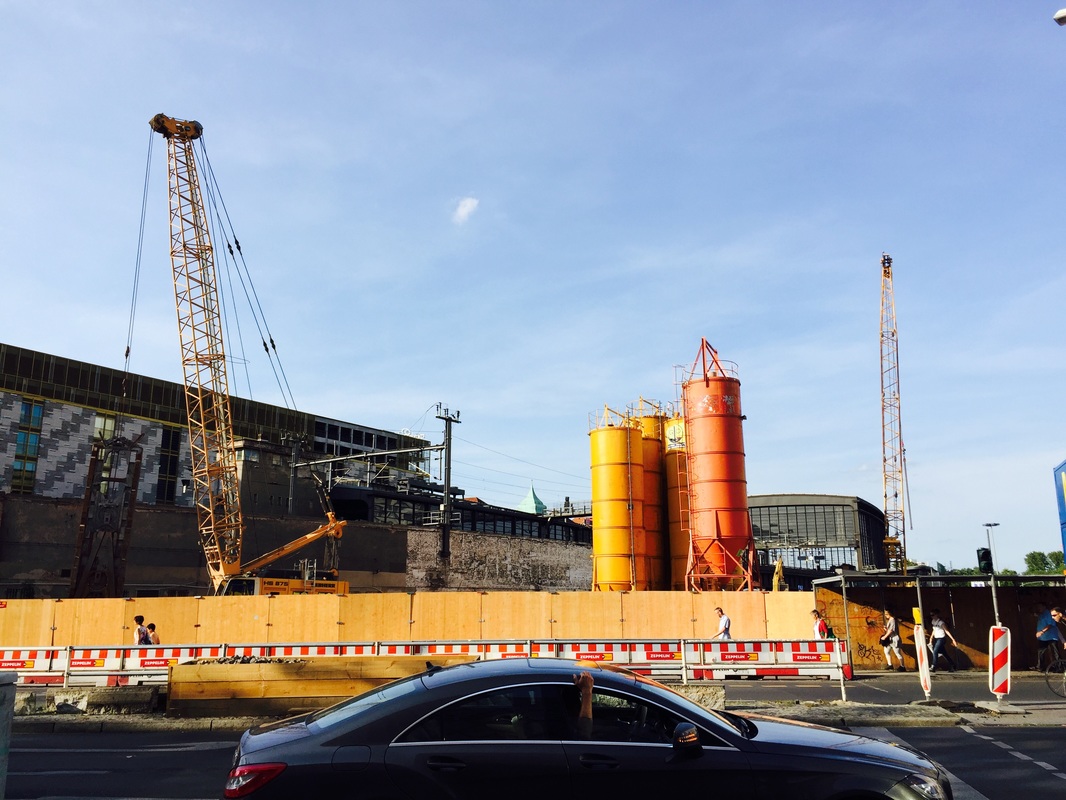
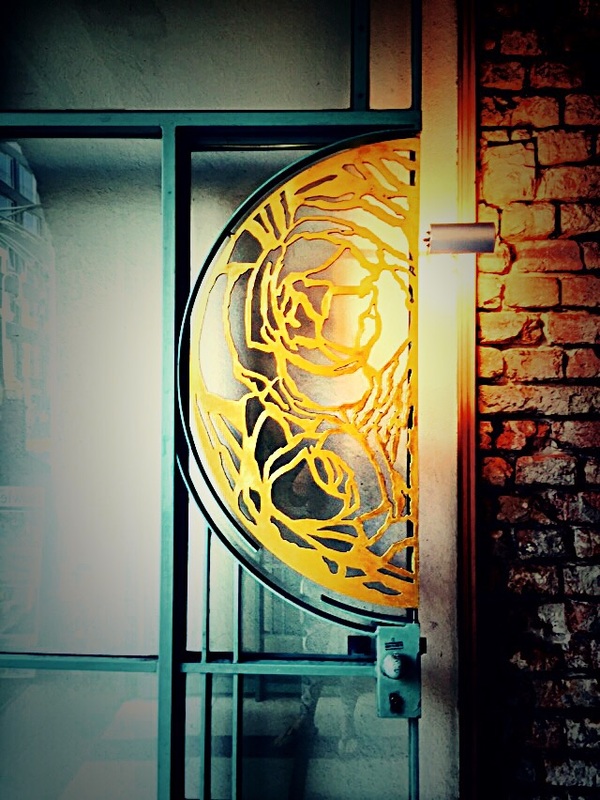
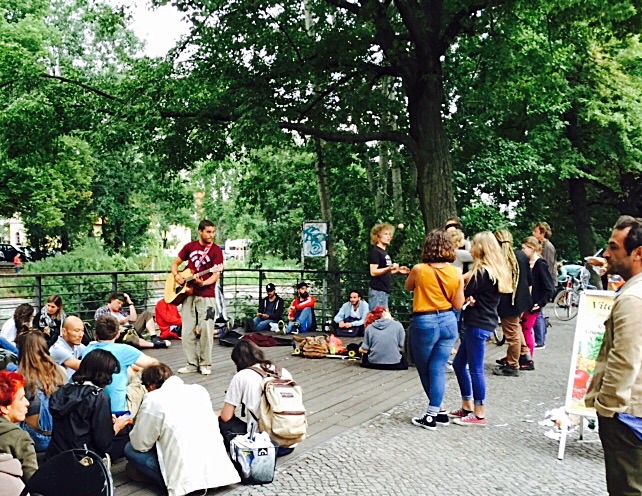
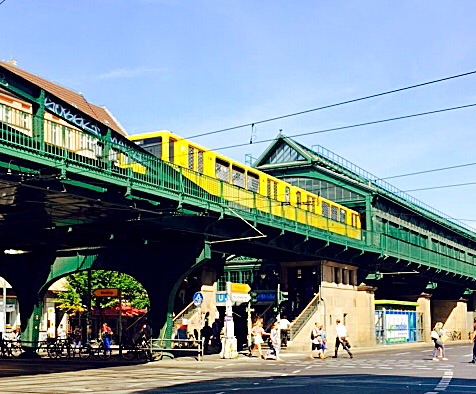
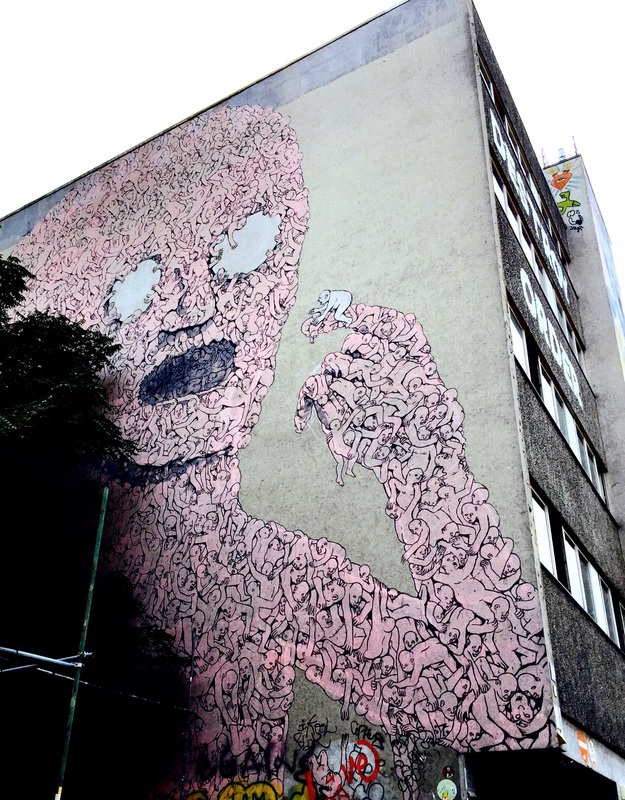
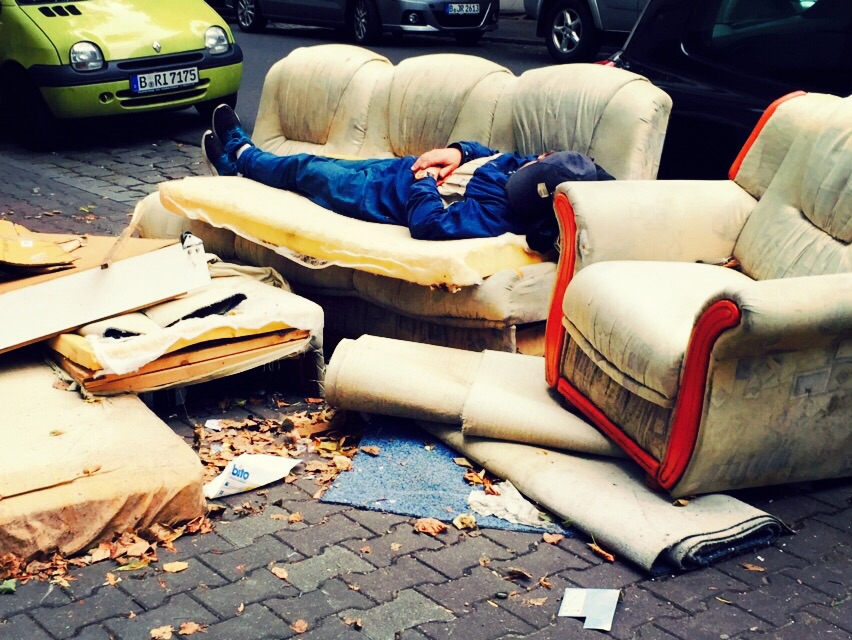
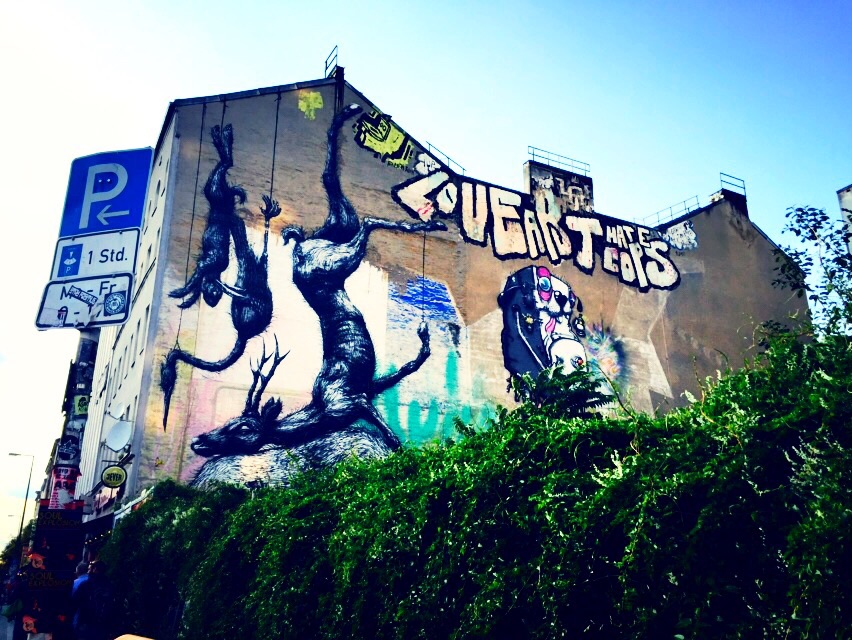
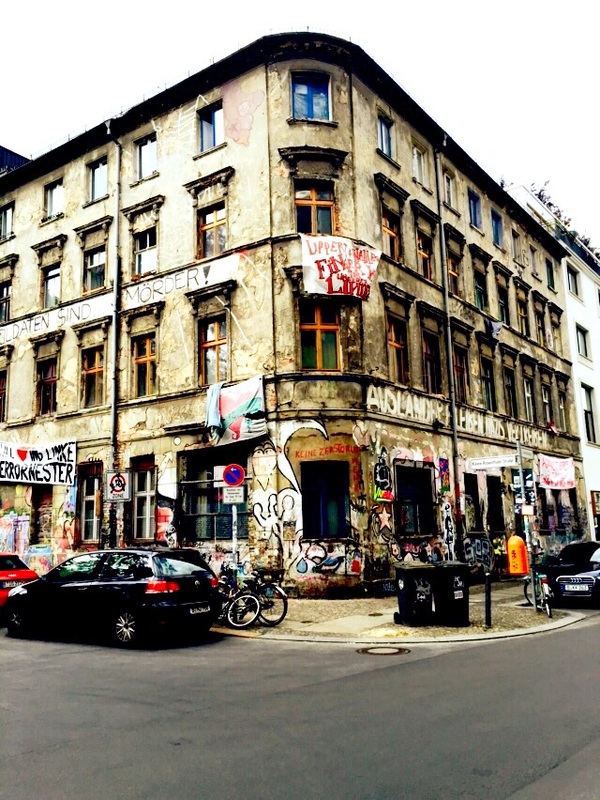
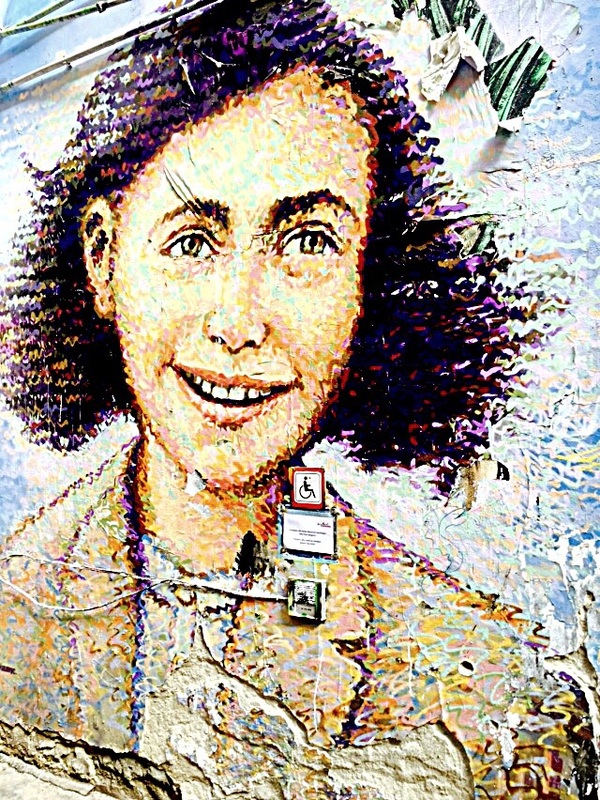
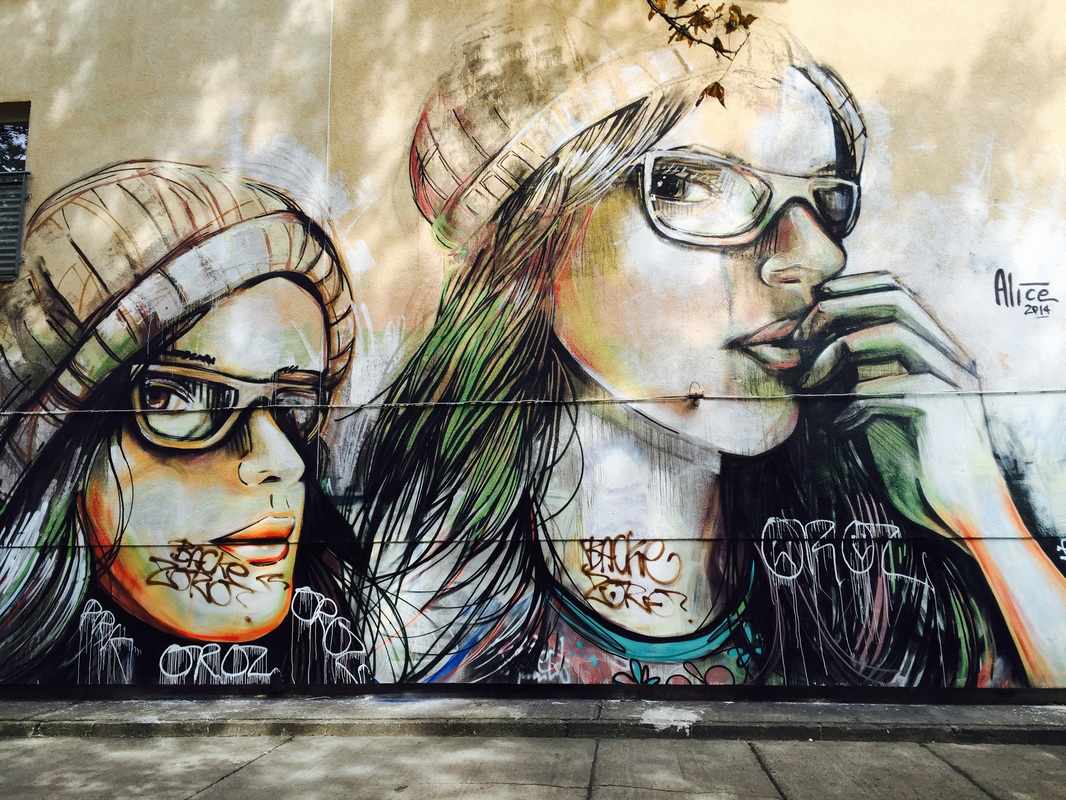
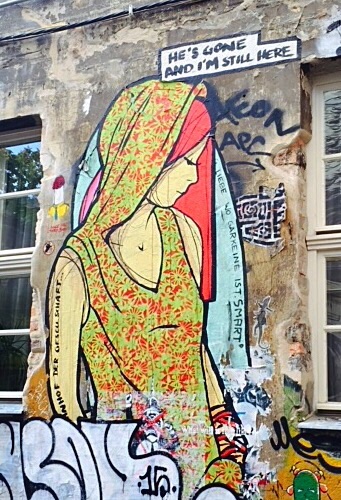
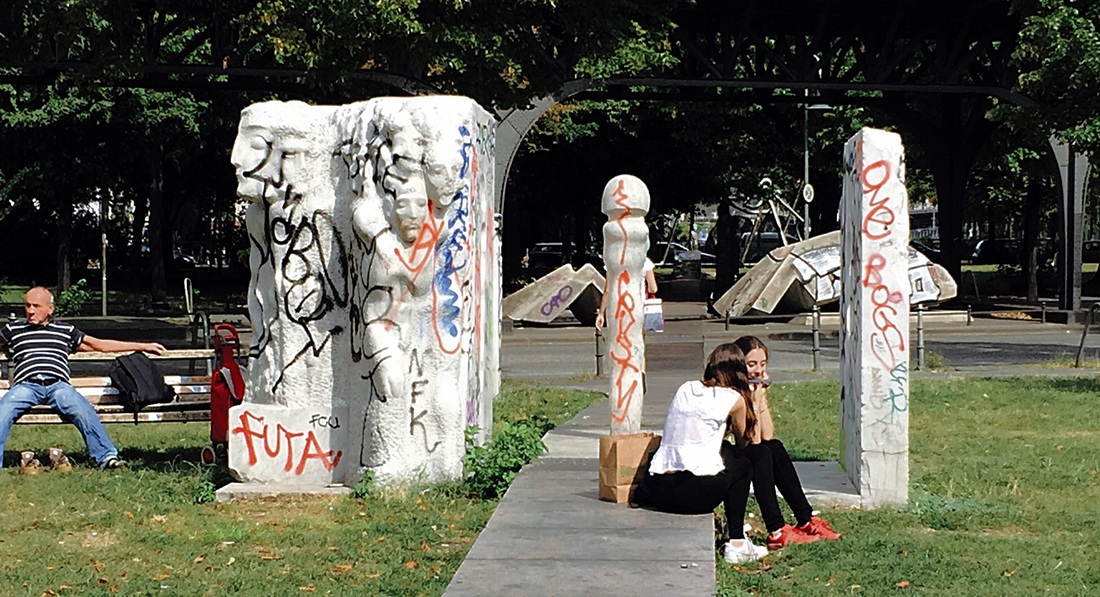
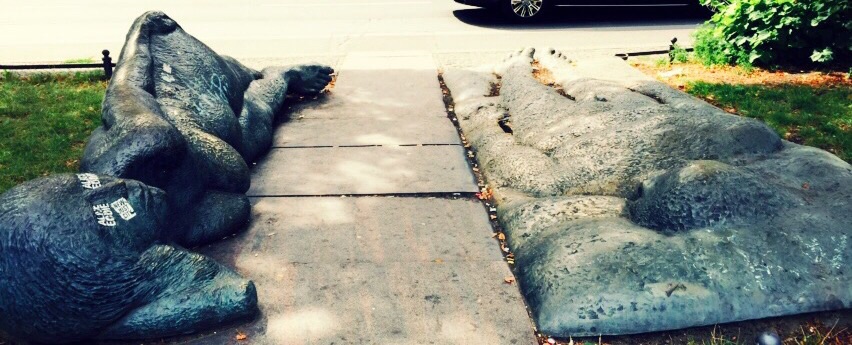
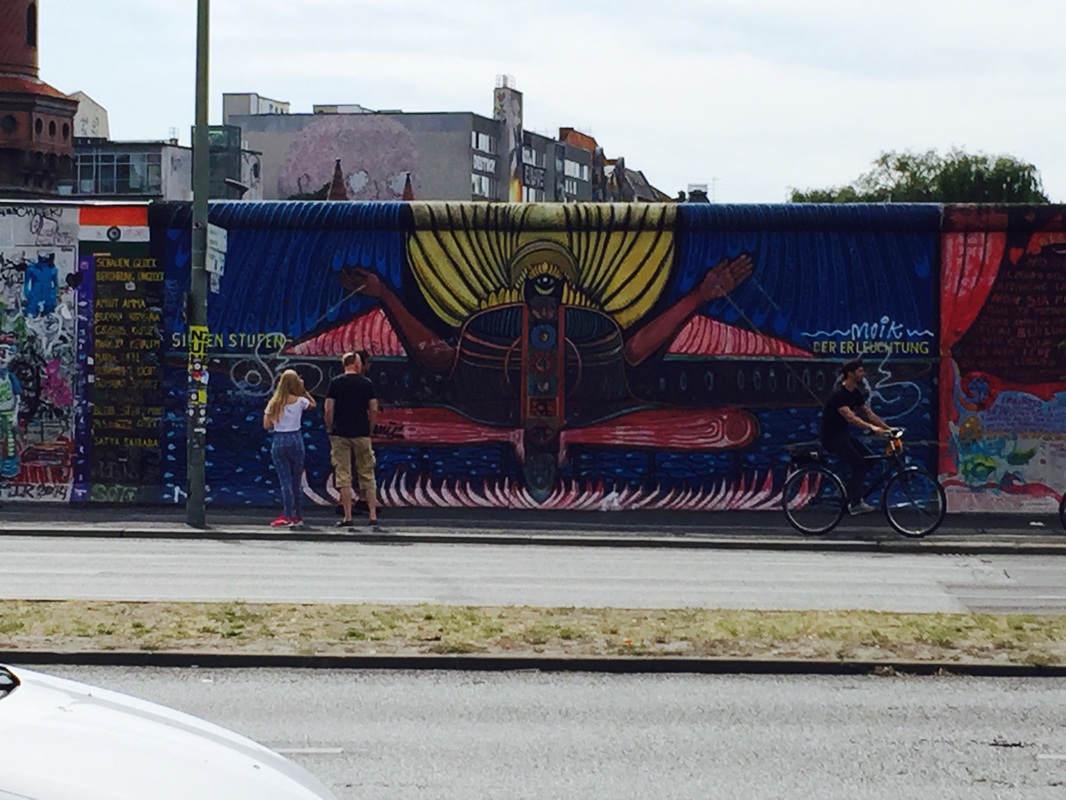
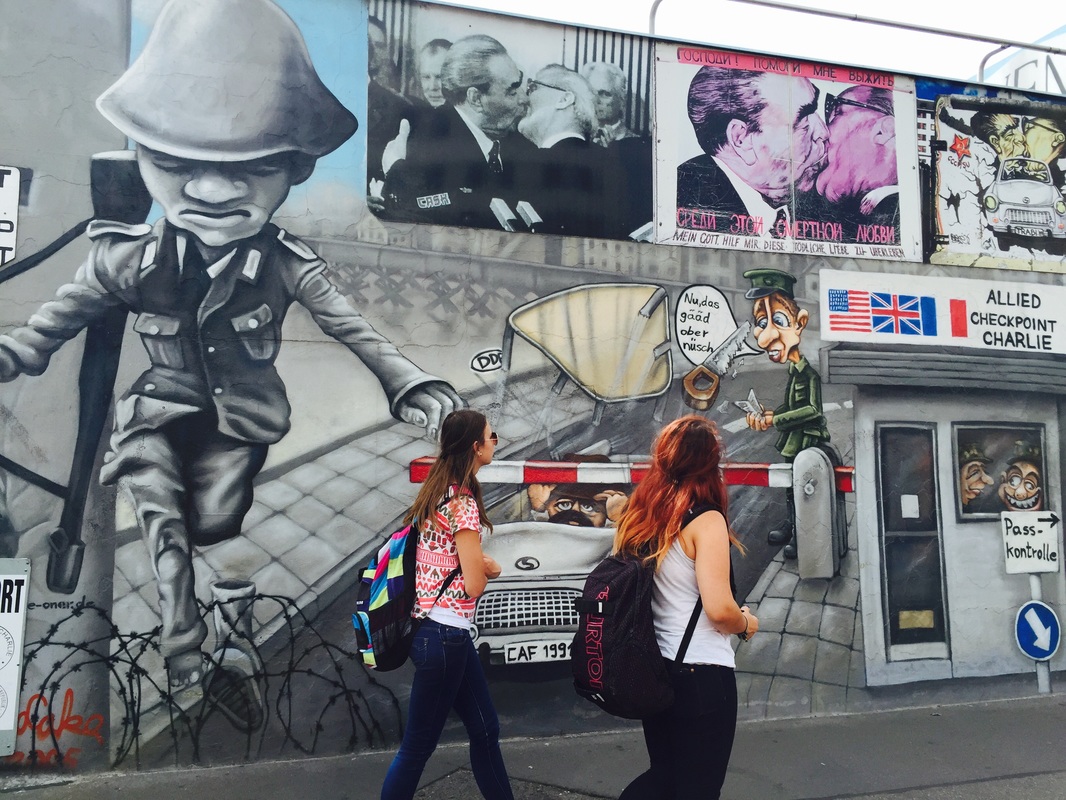
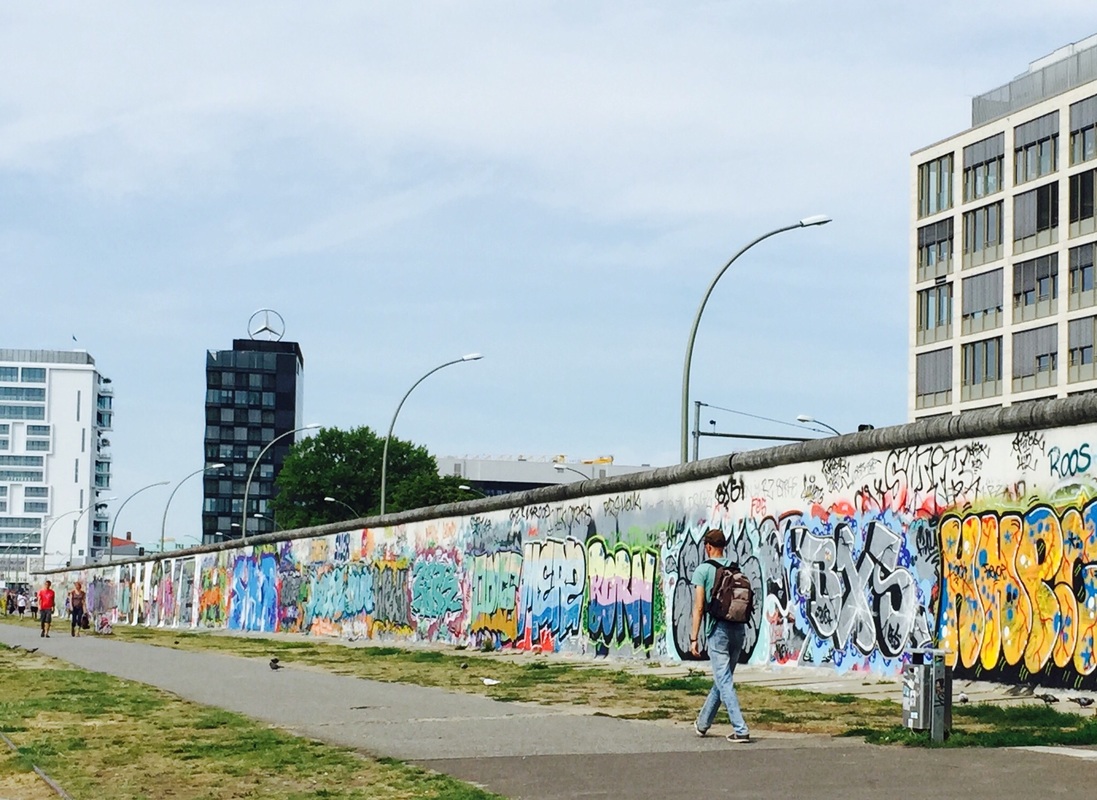
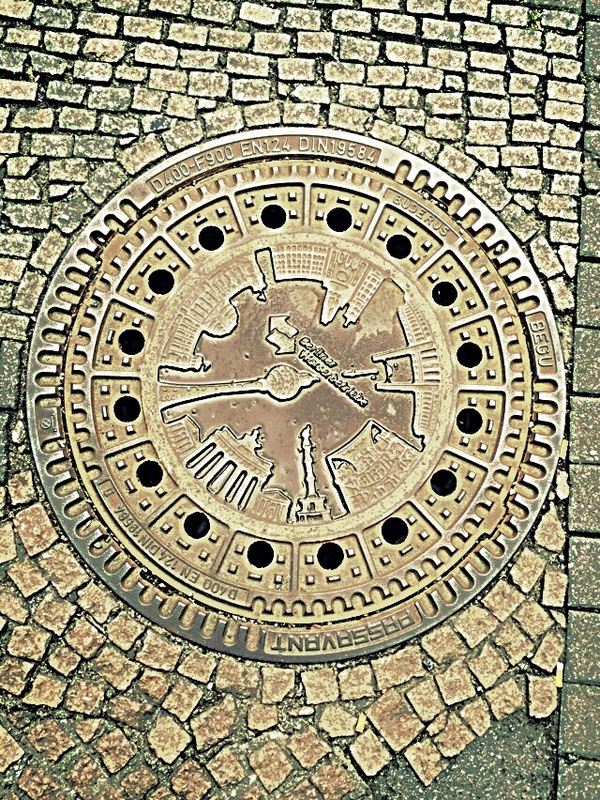
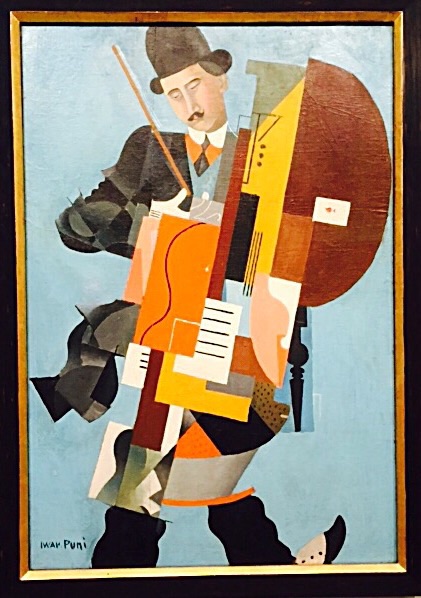
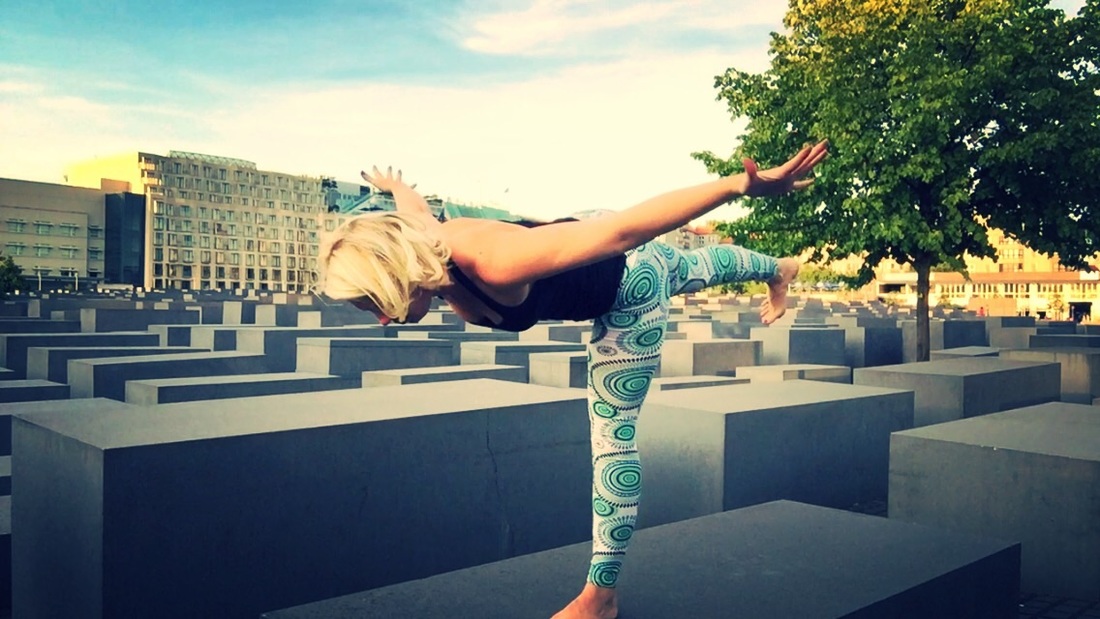
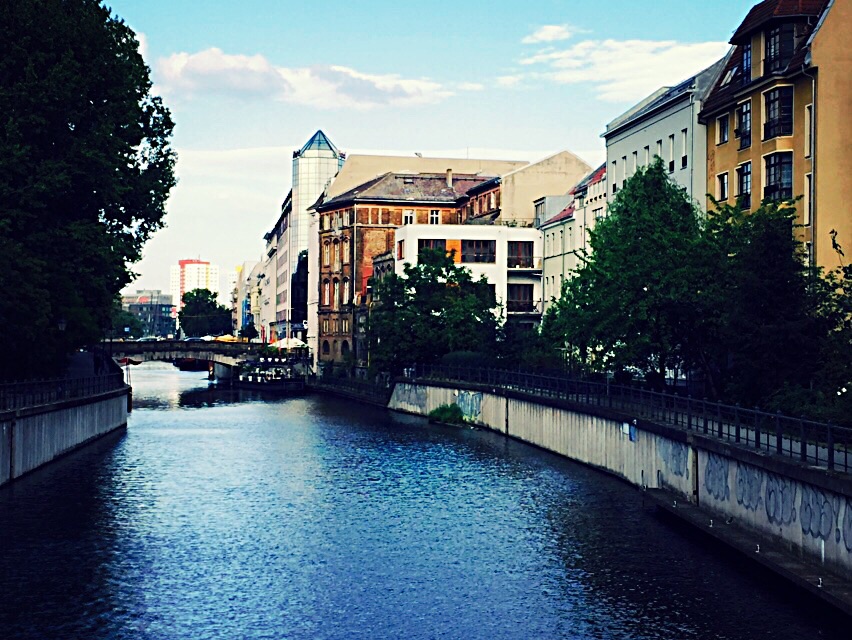
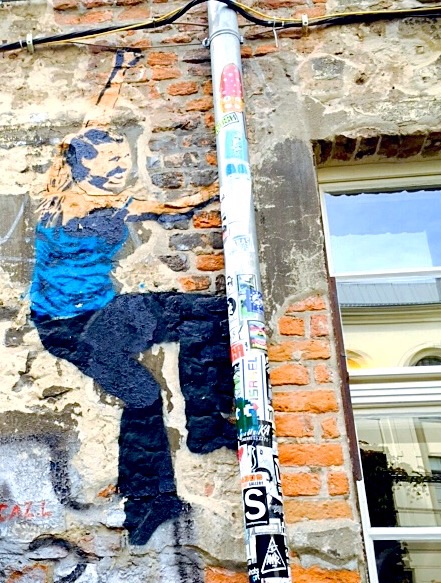
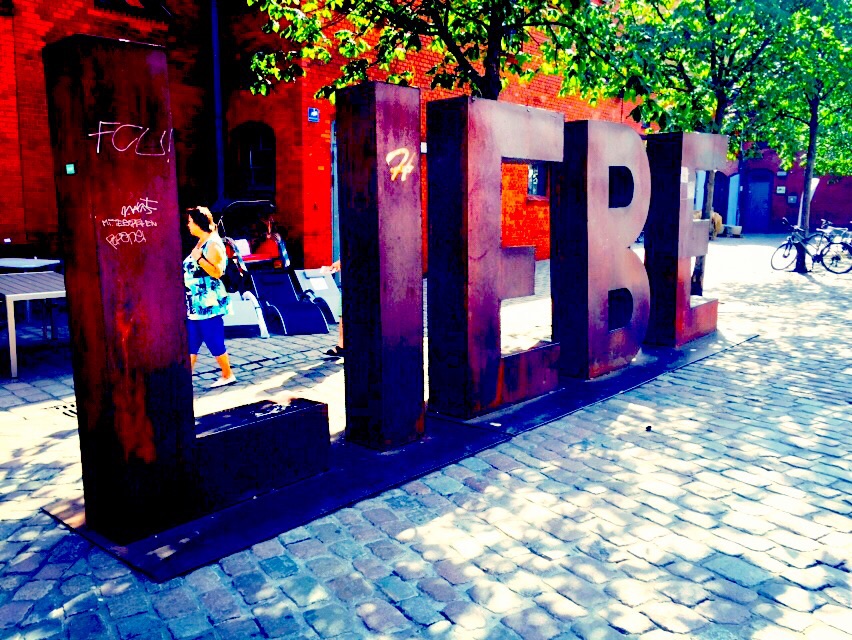
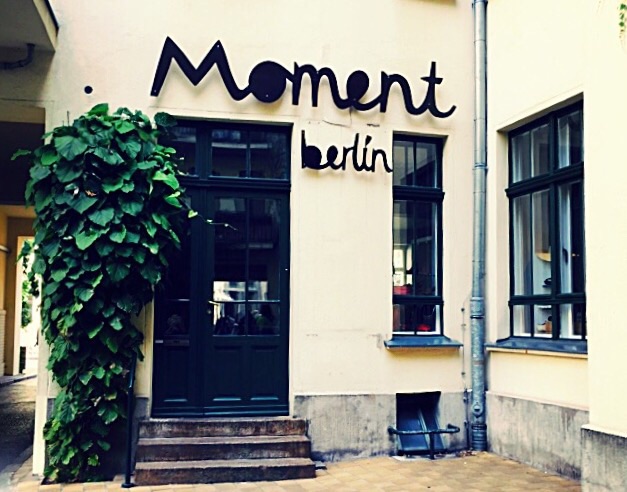
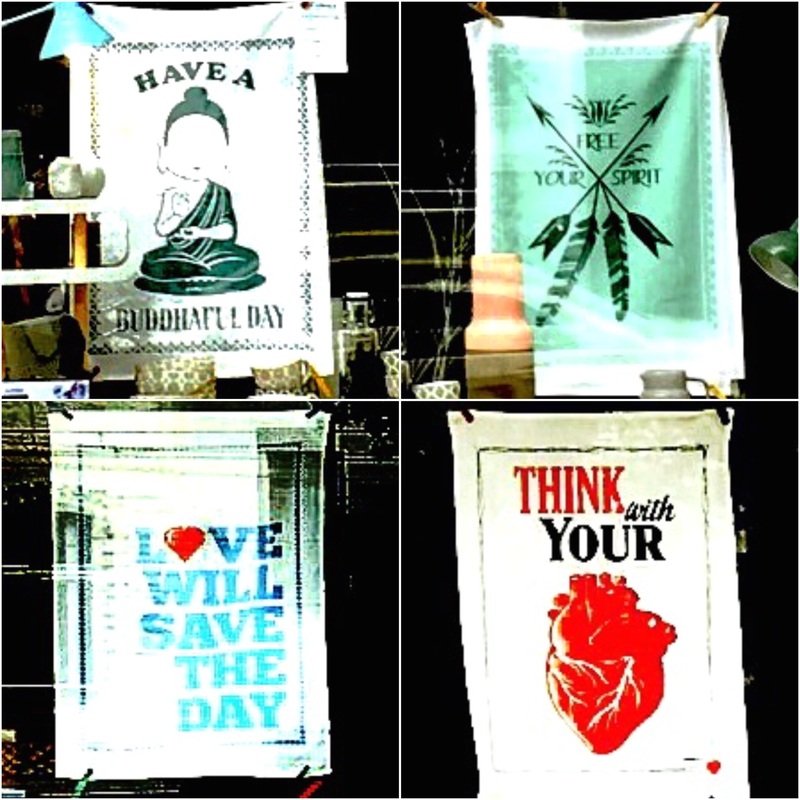

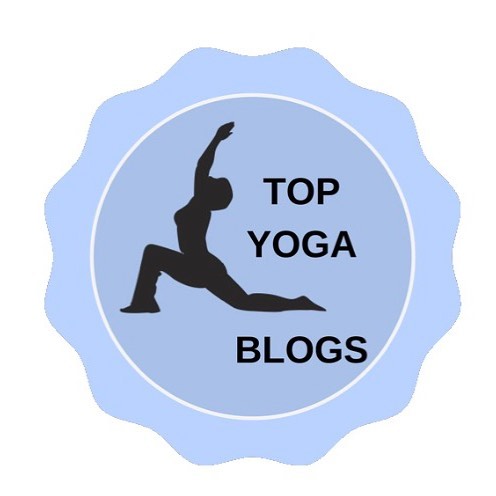
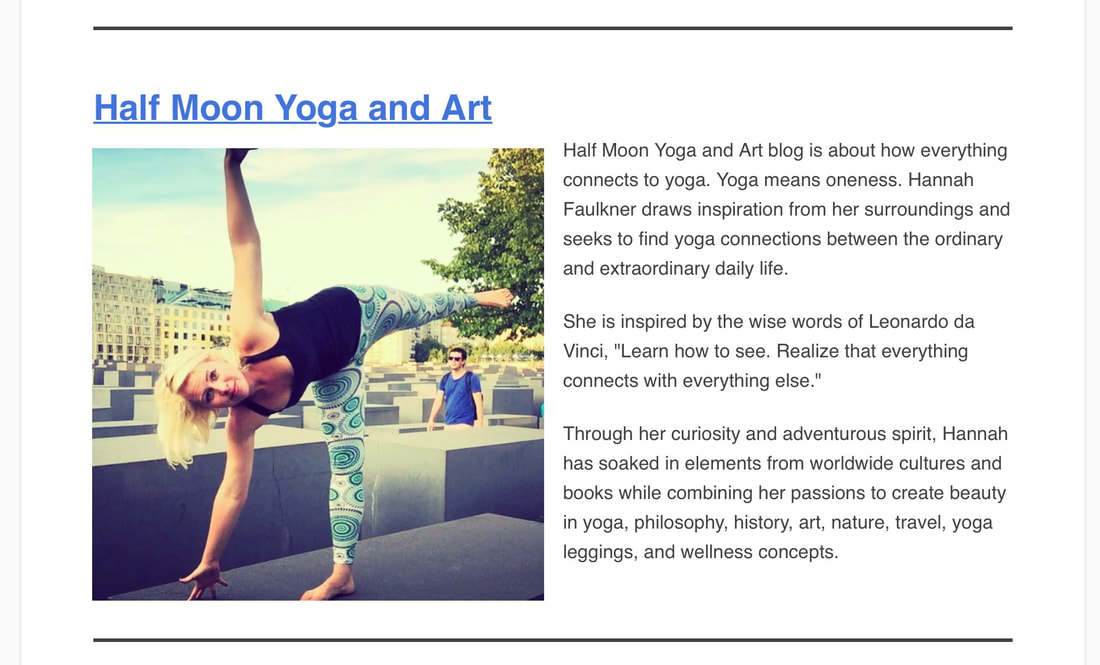

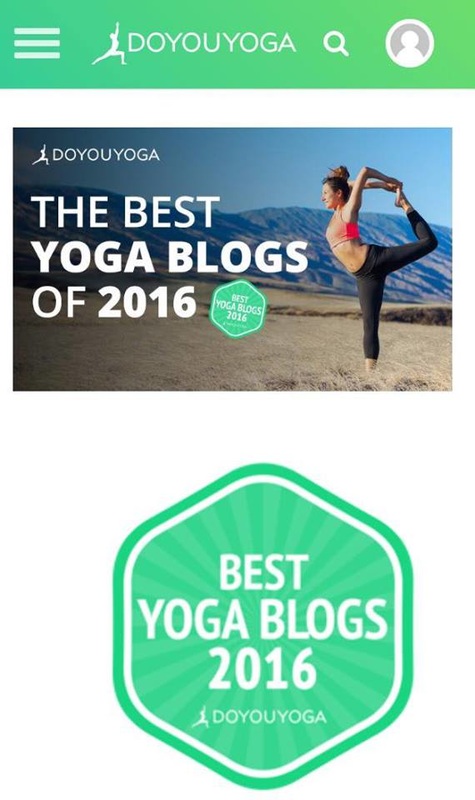

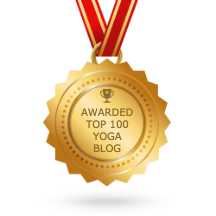
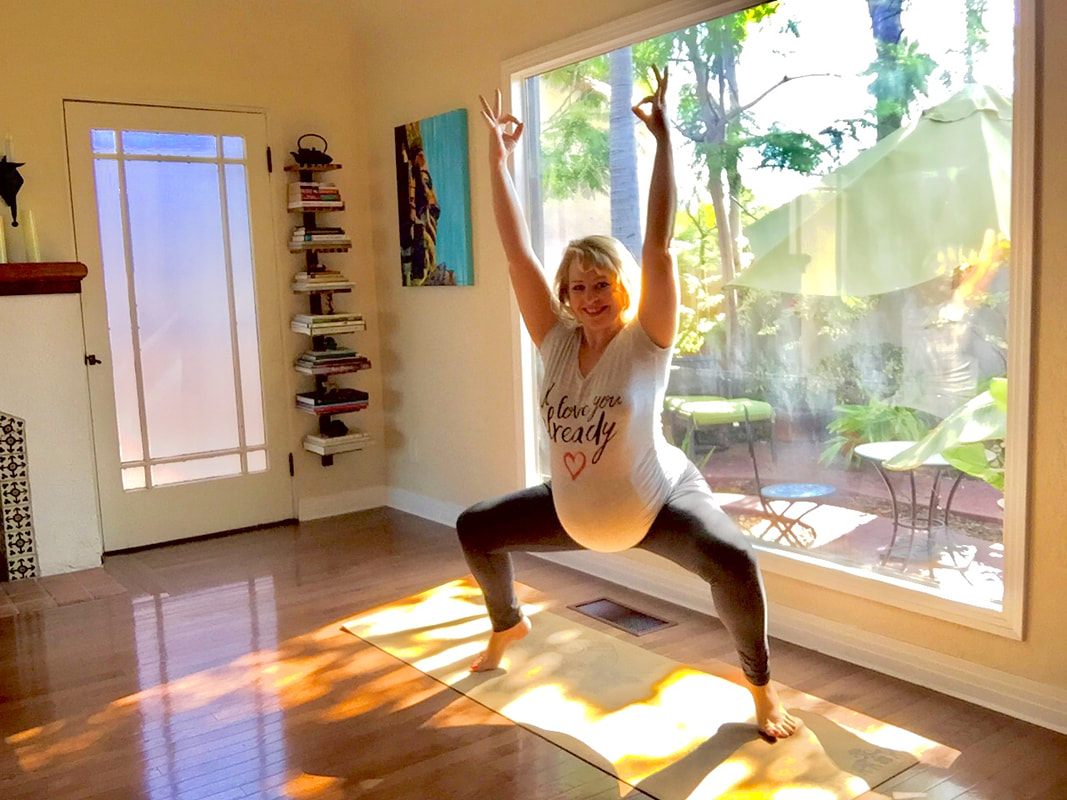
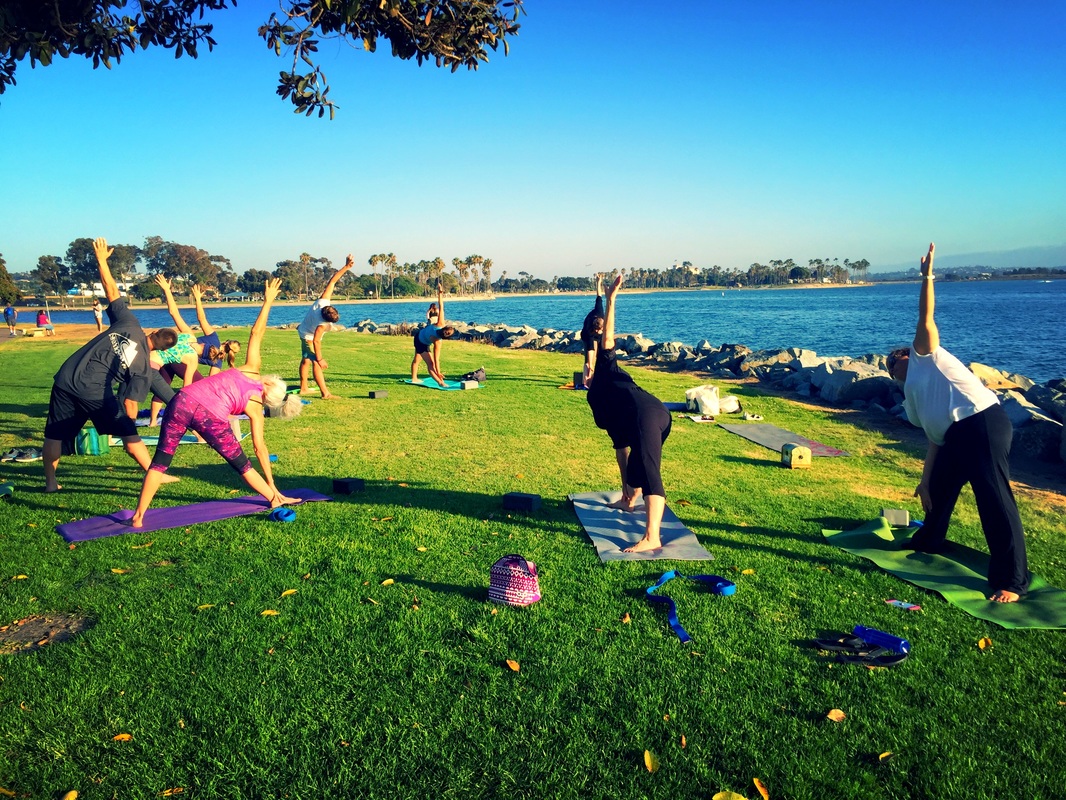
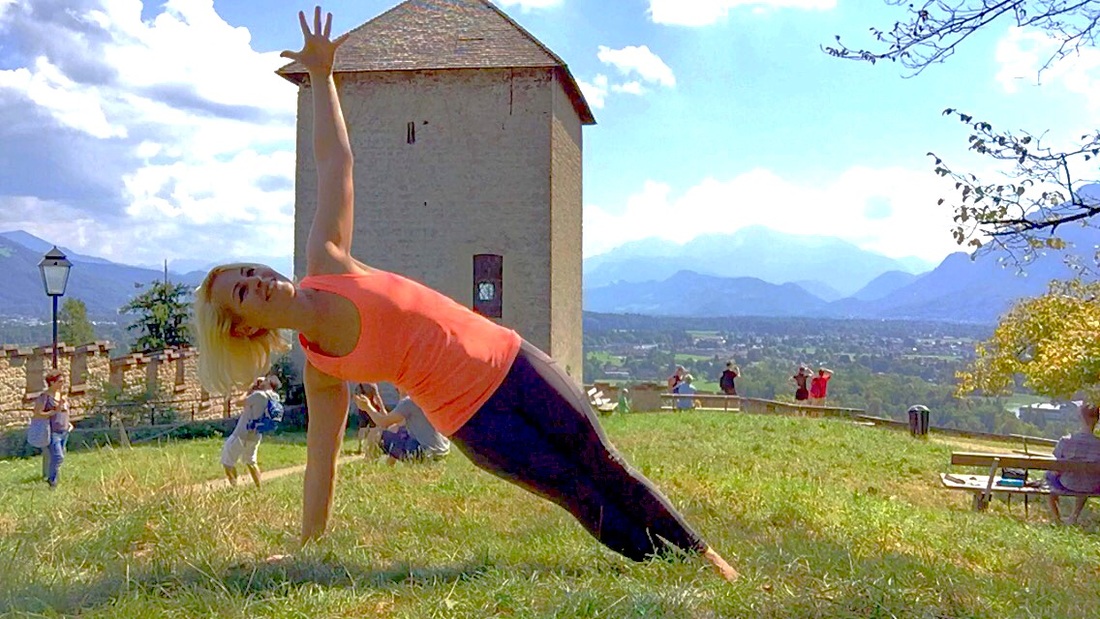
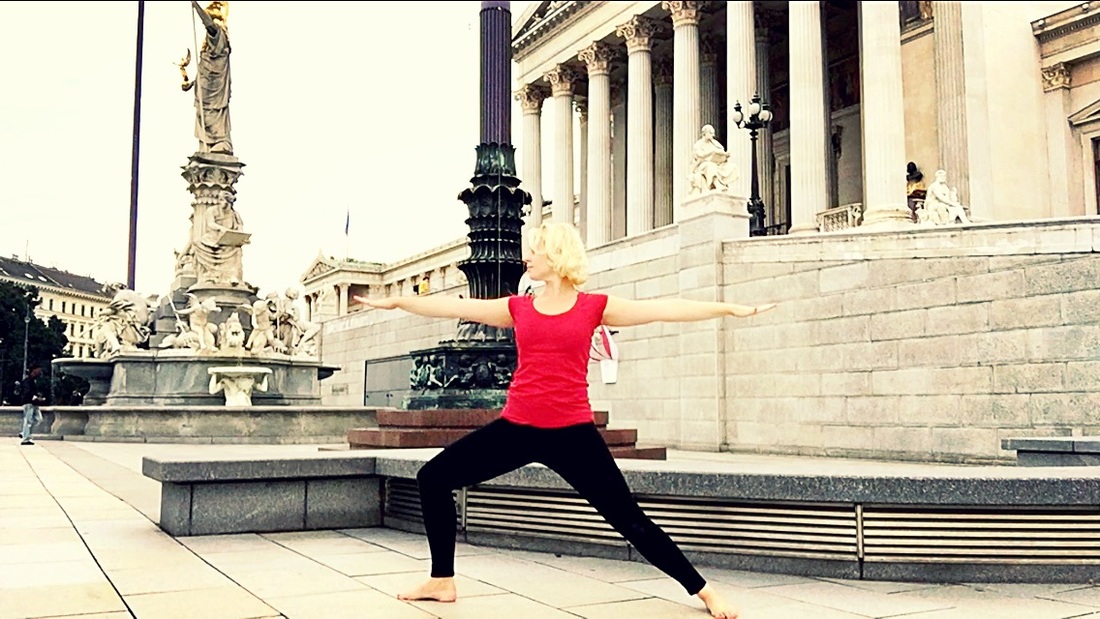
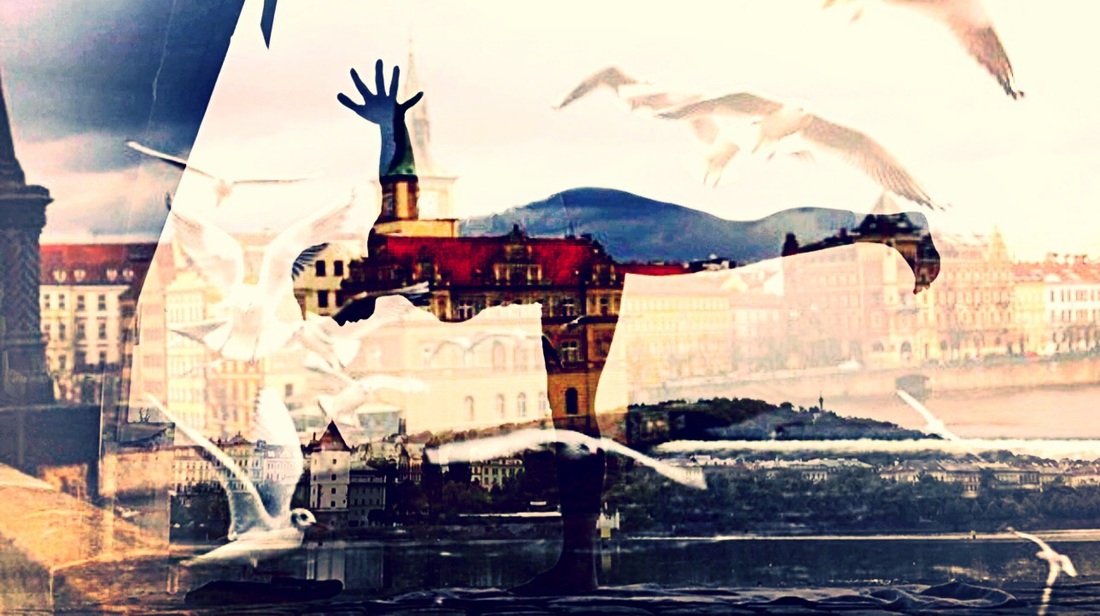
 RSS Feed
RSS Feed